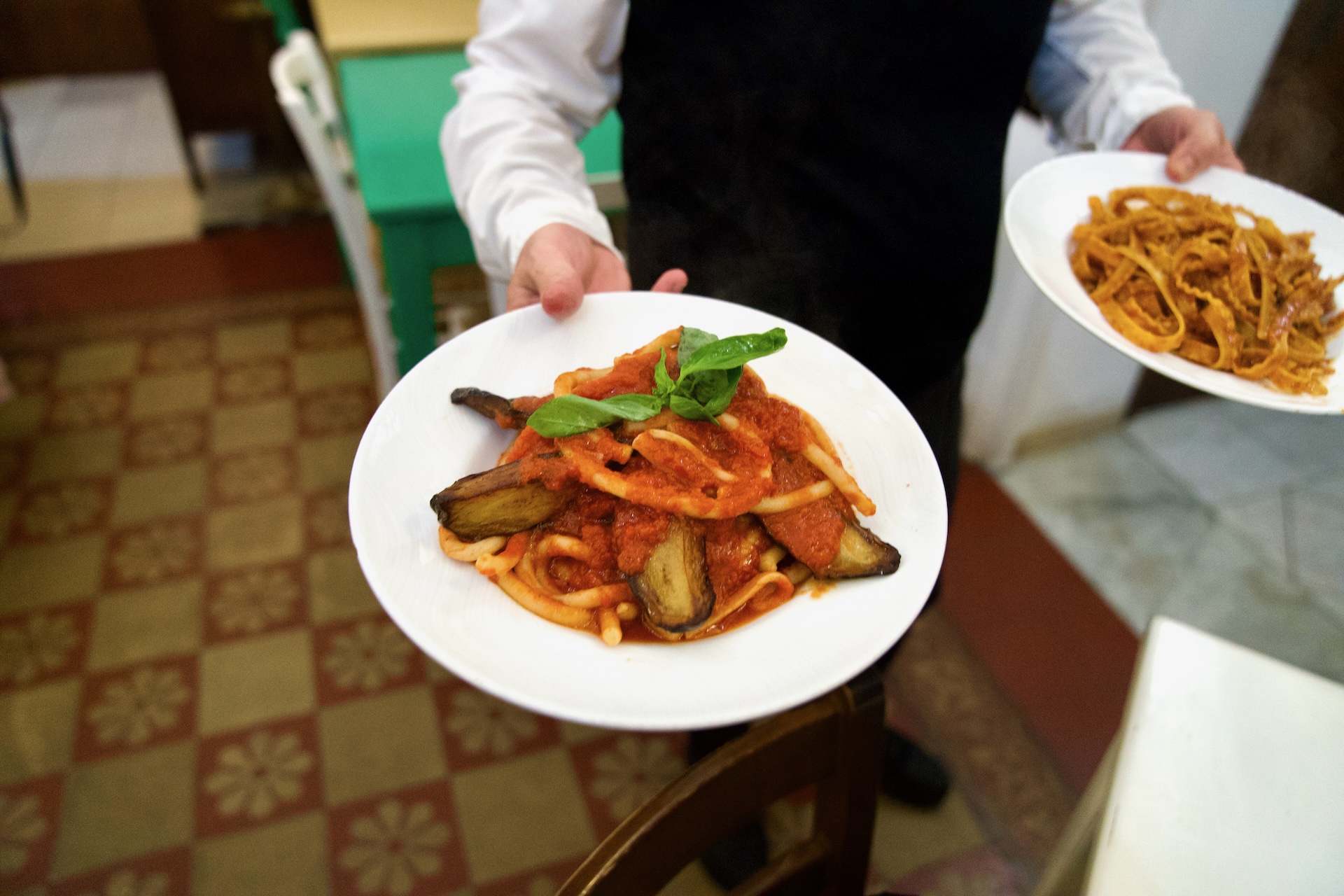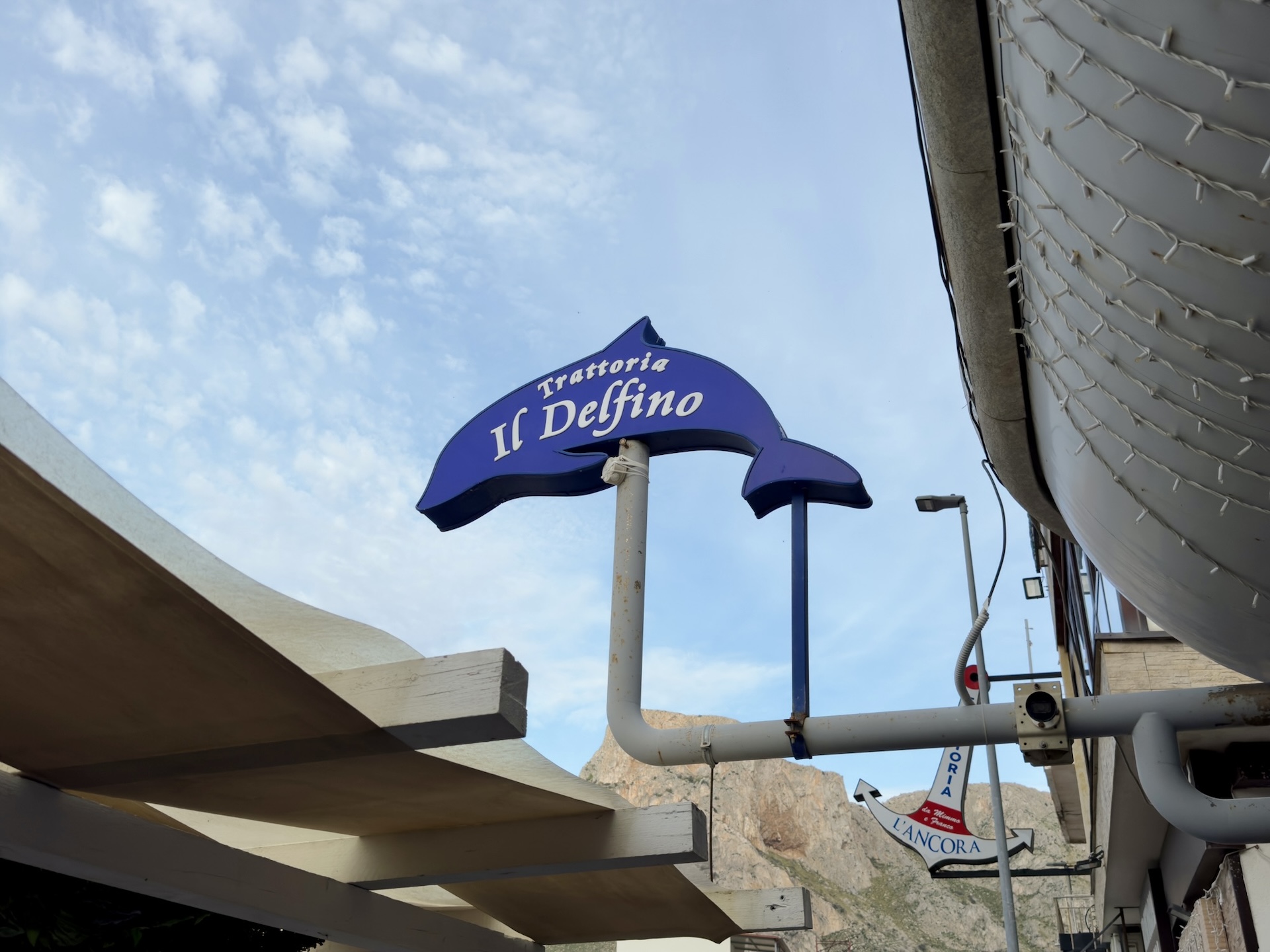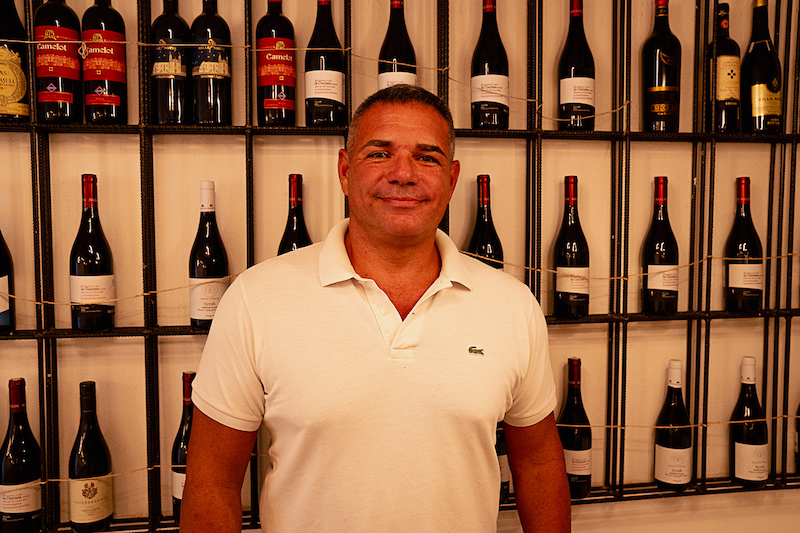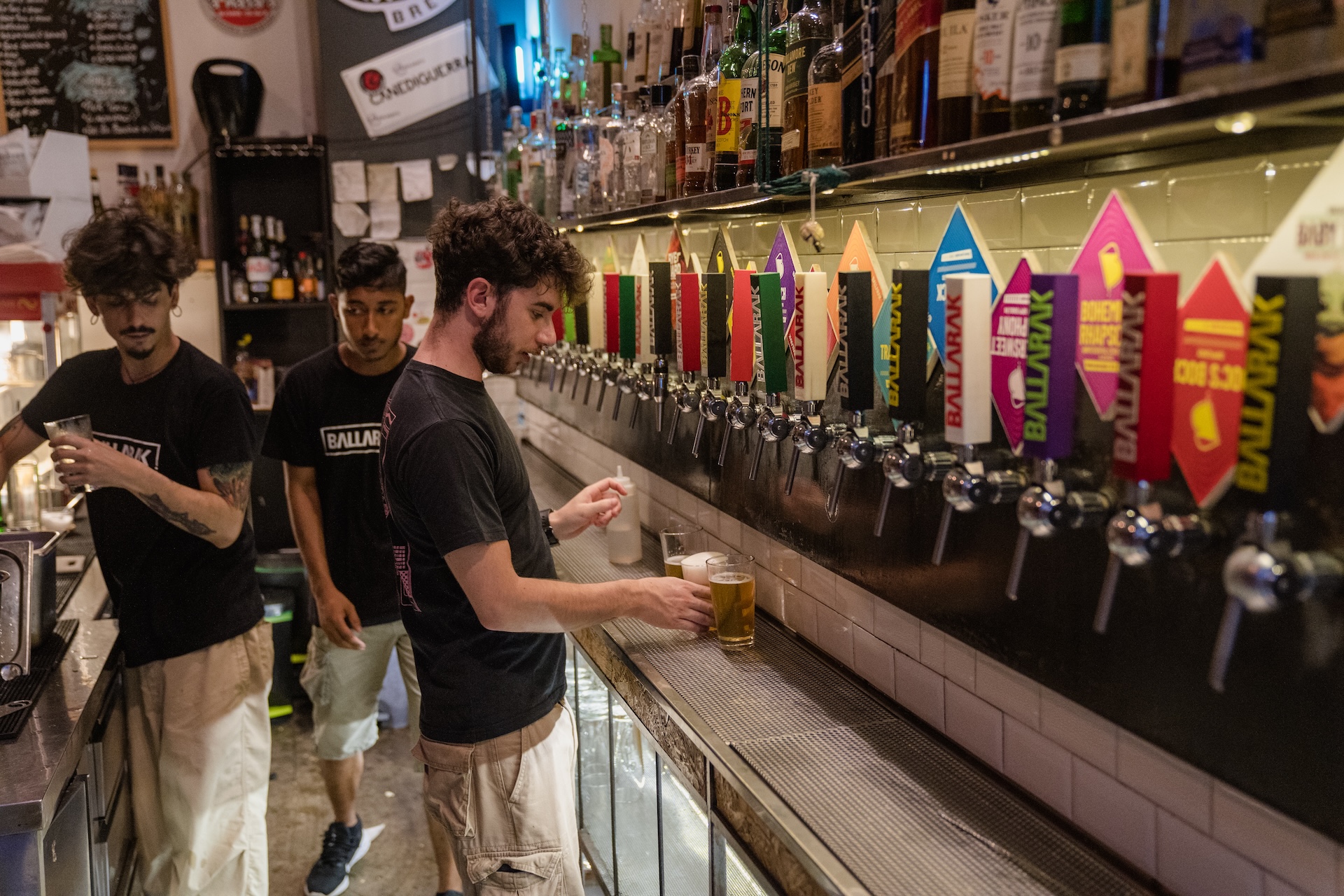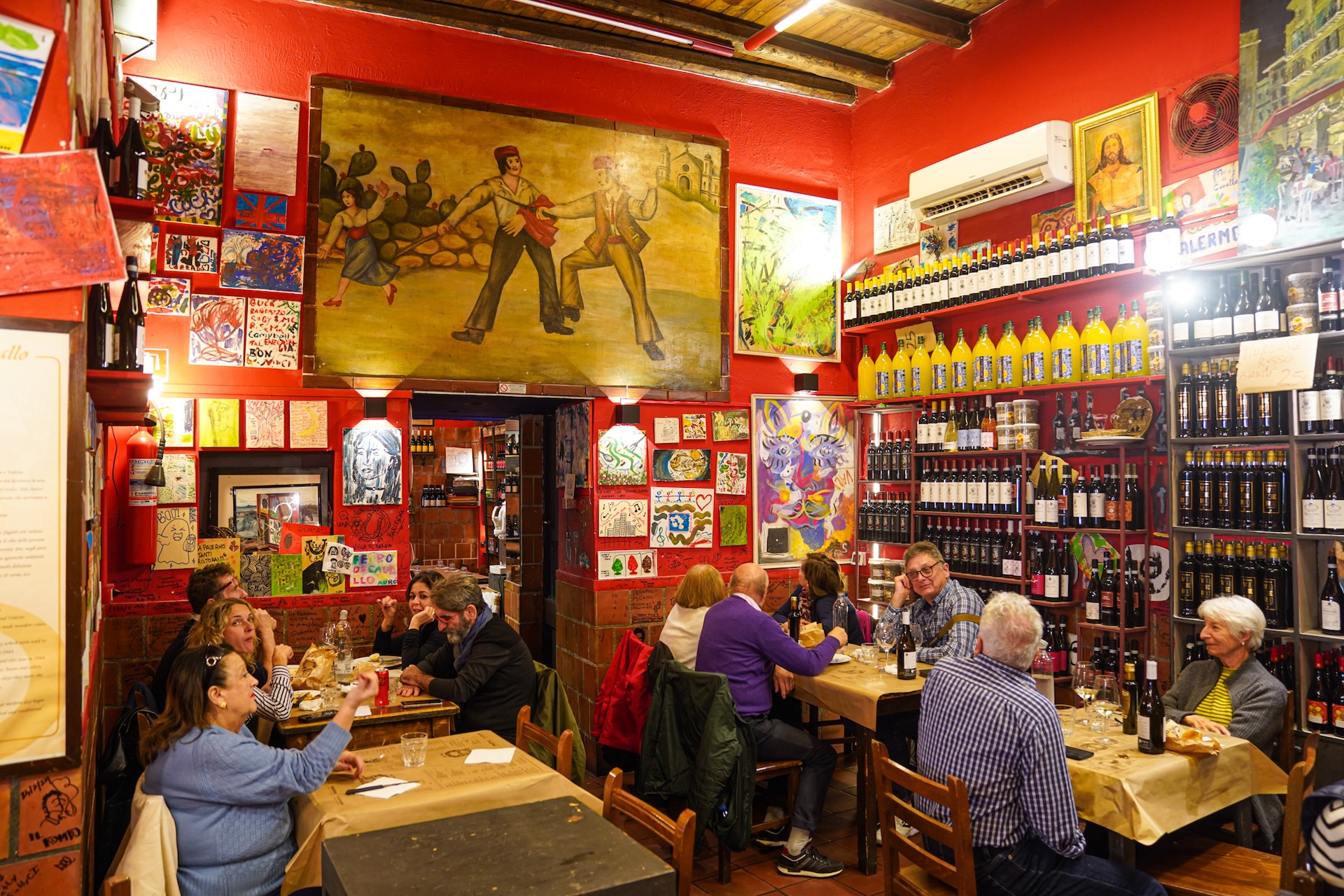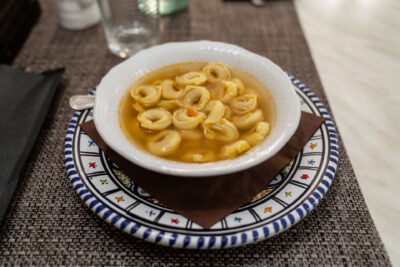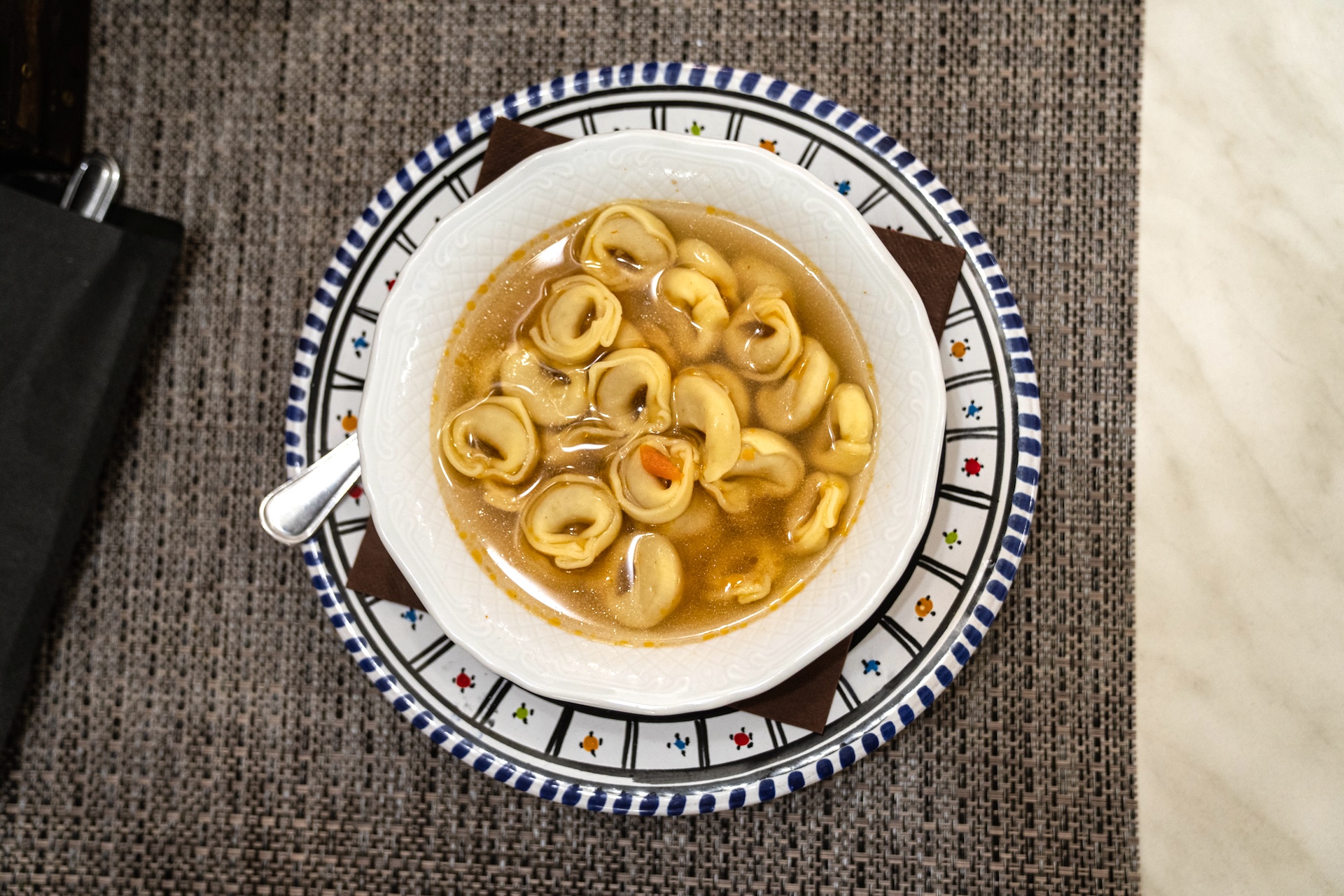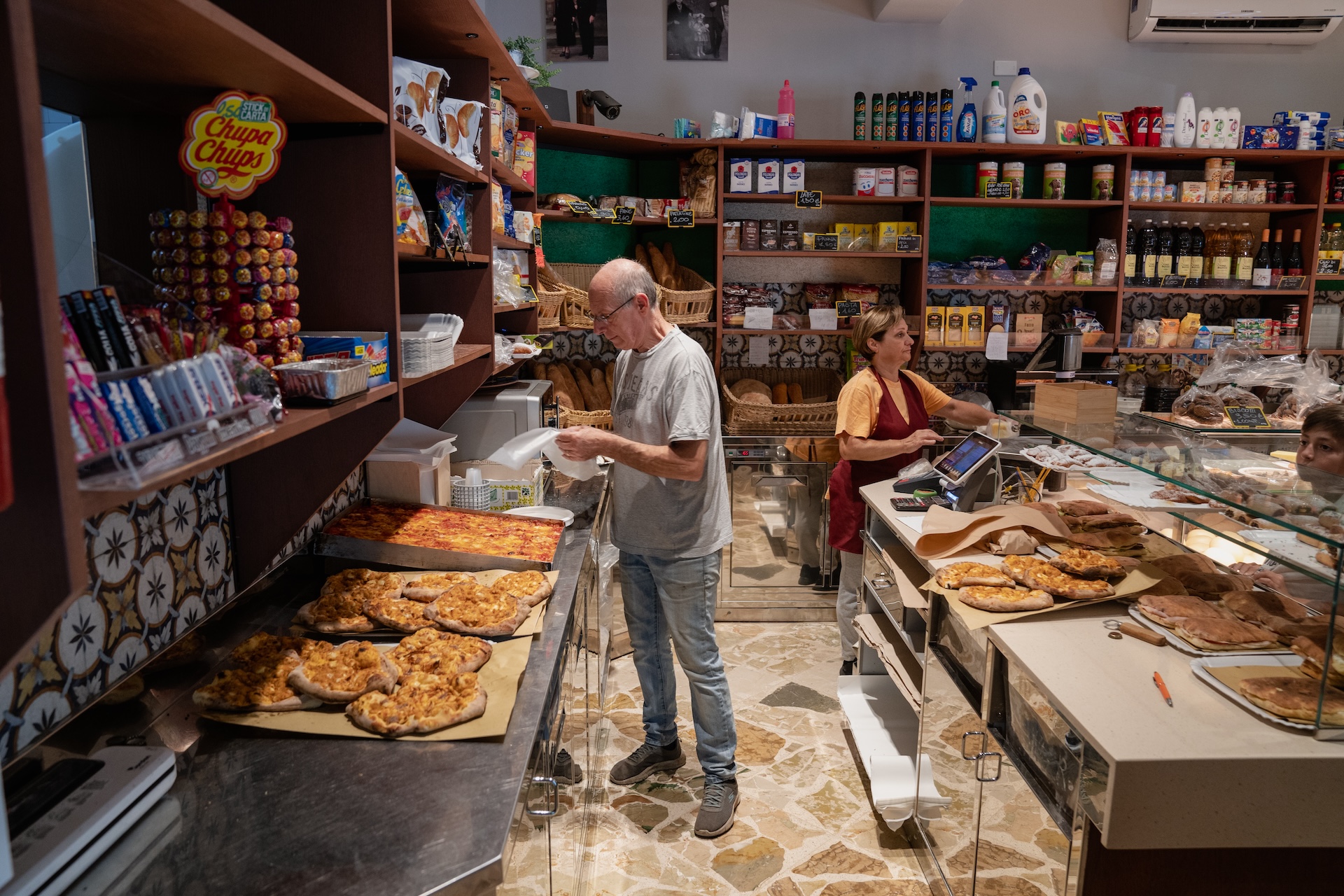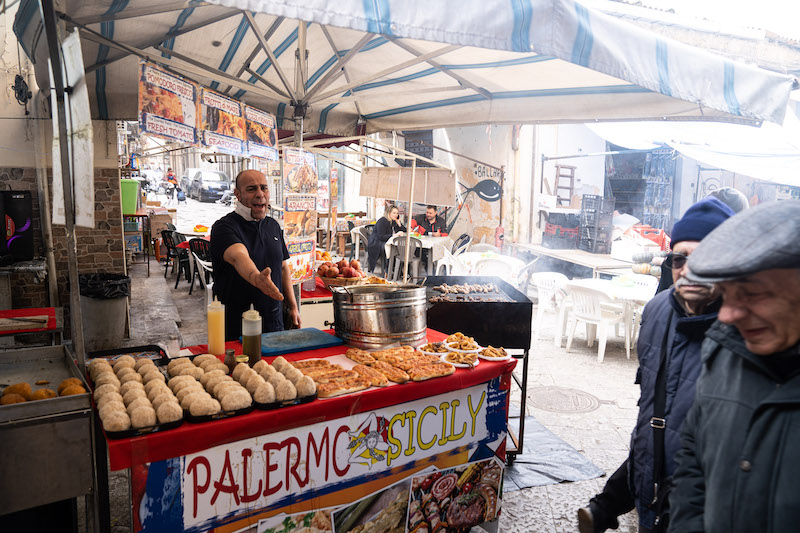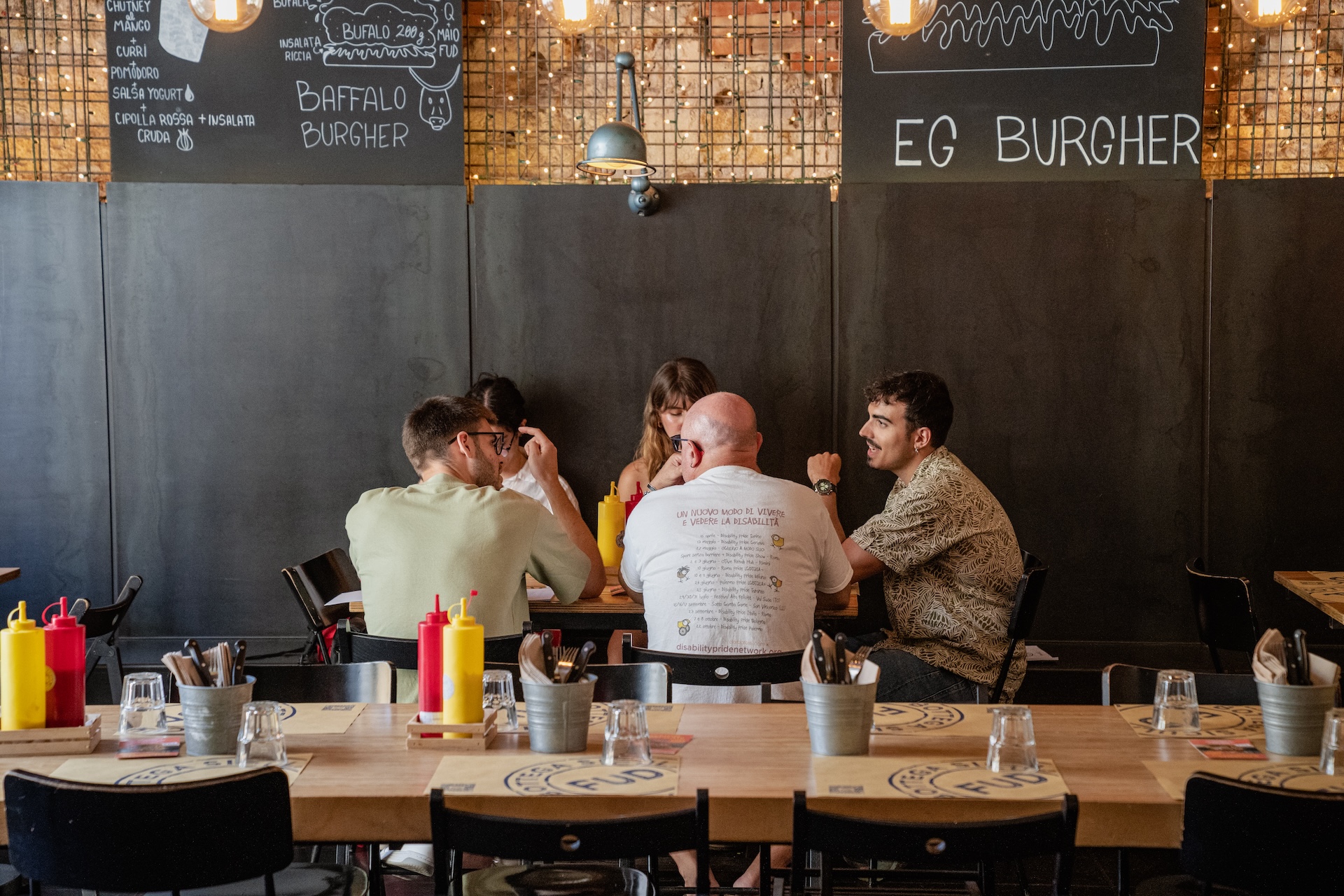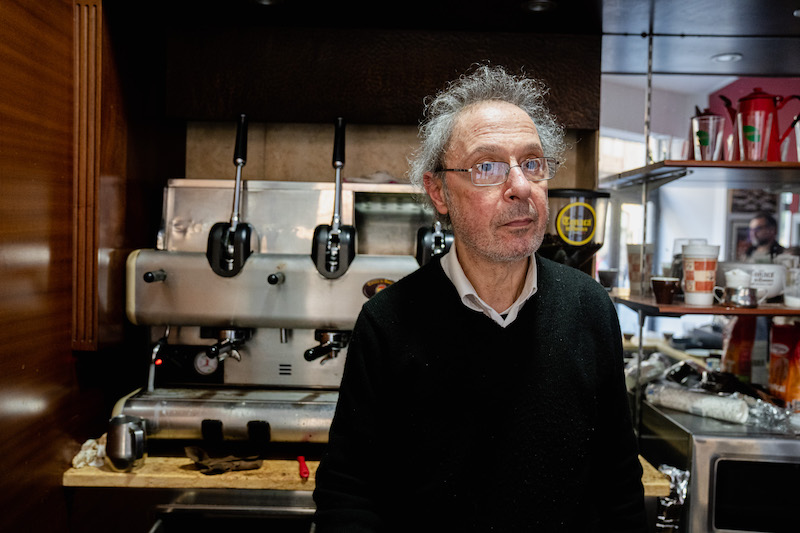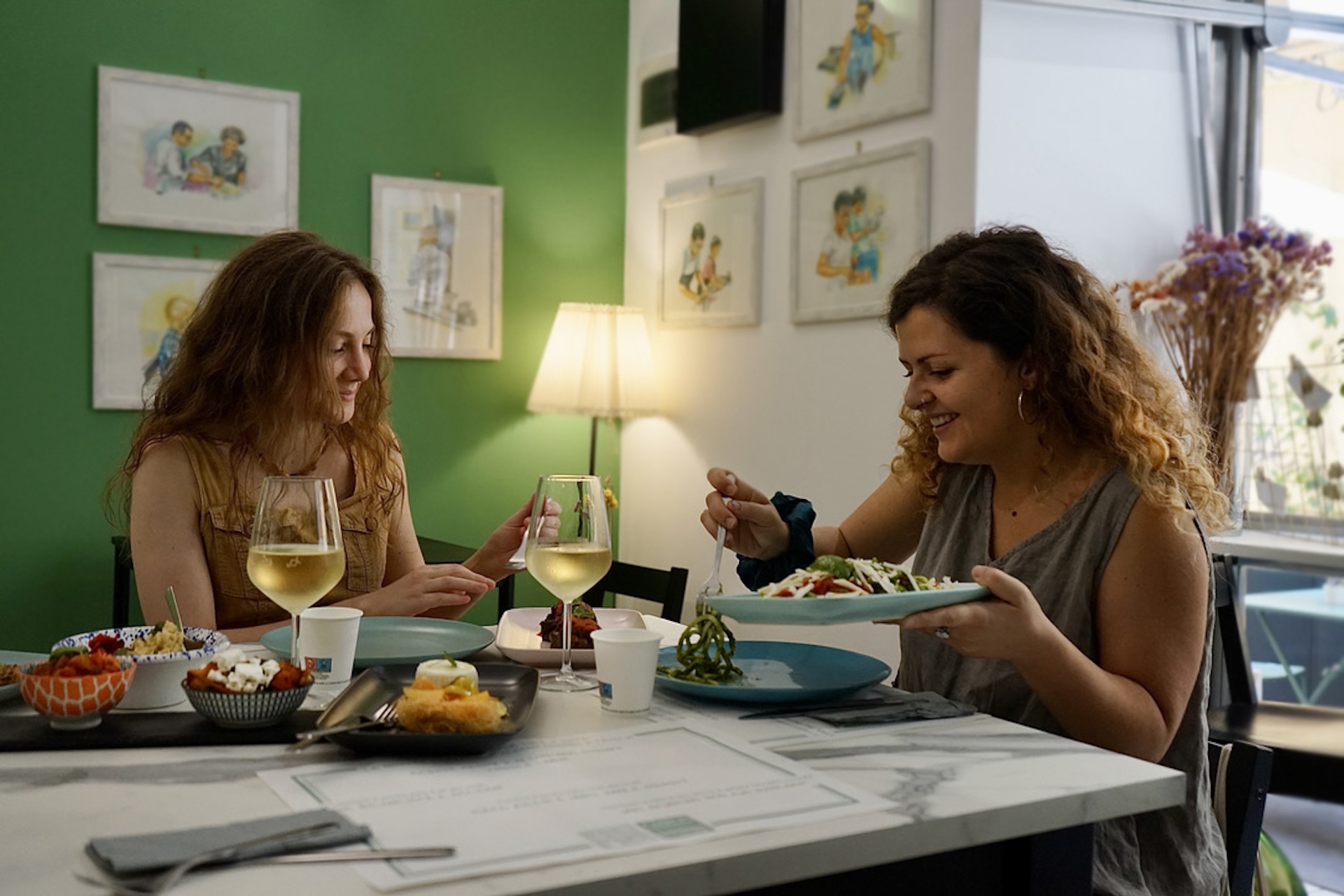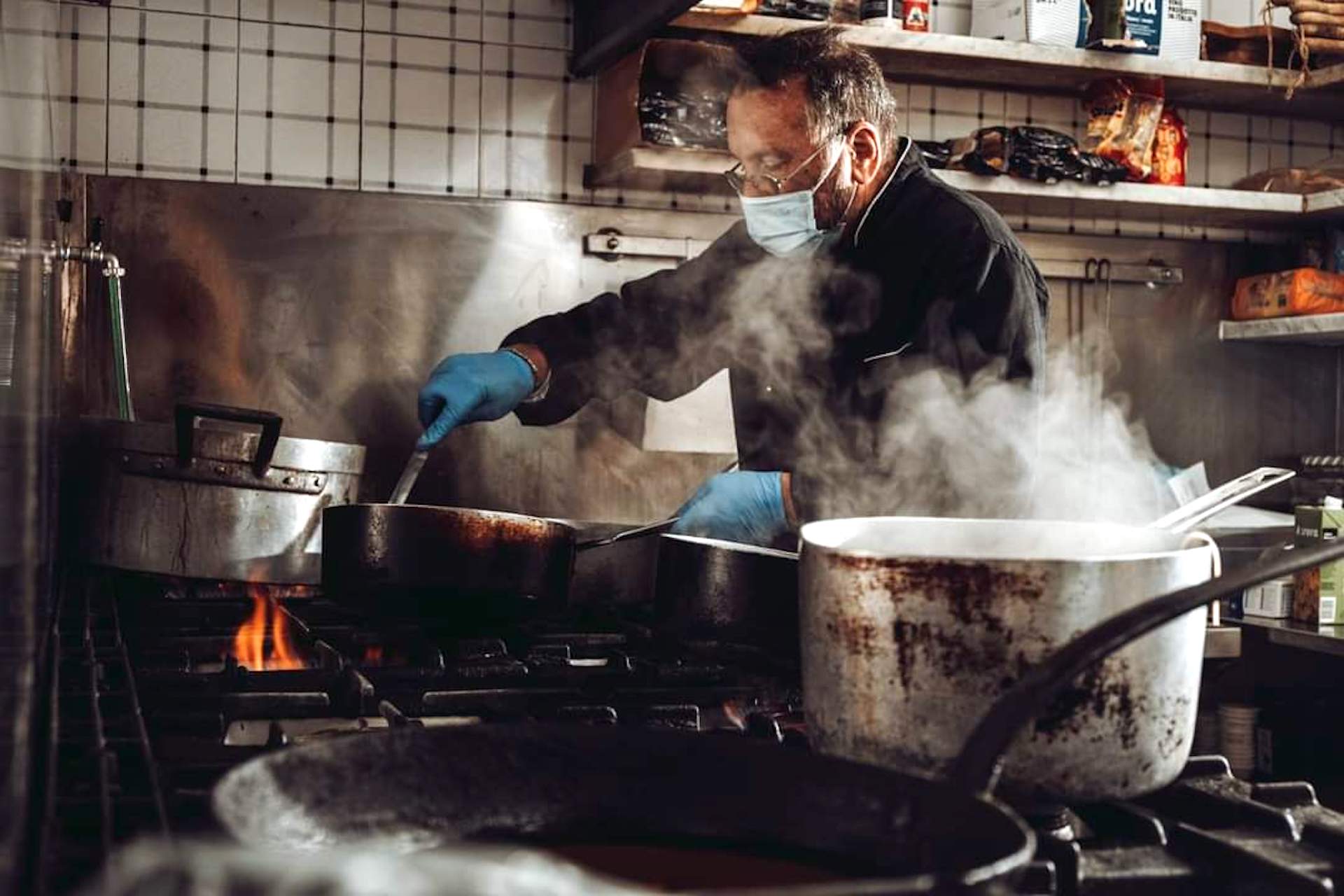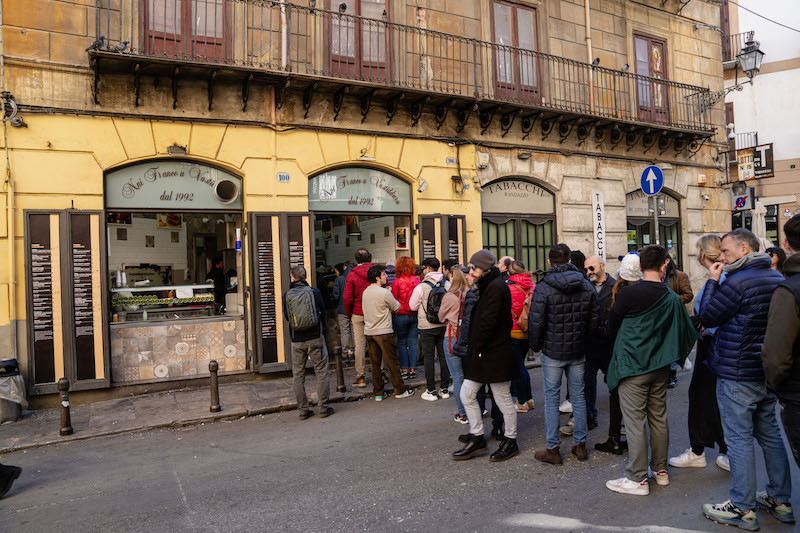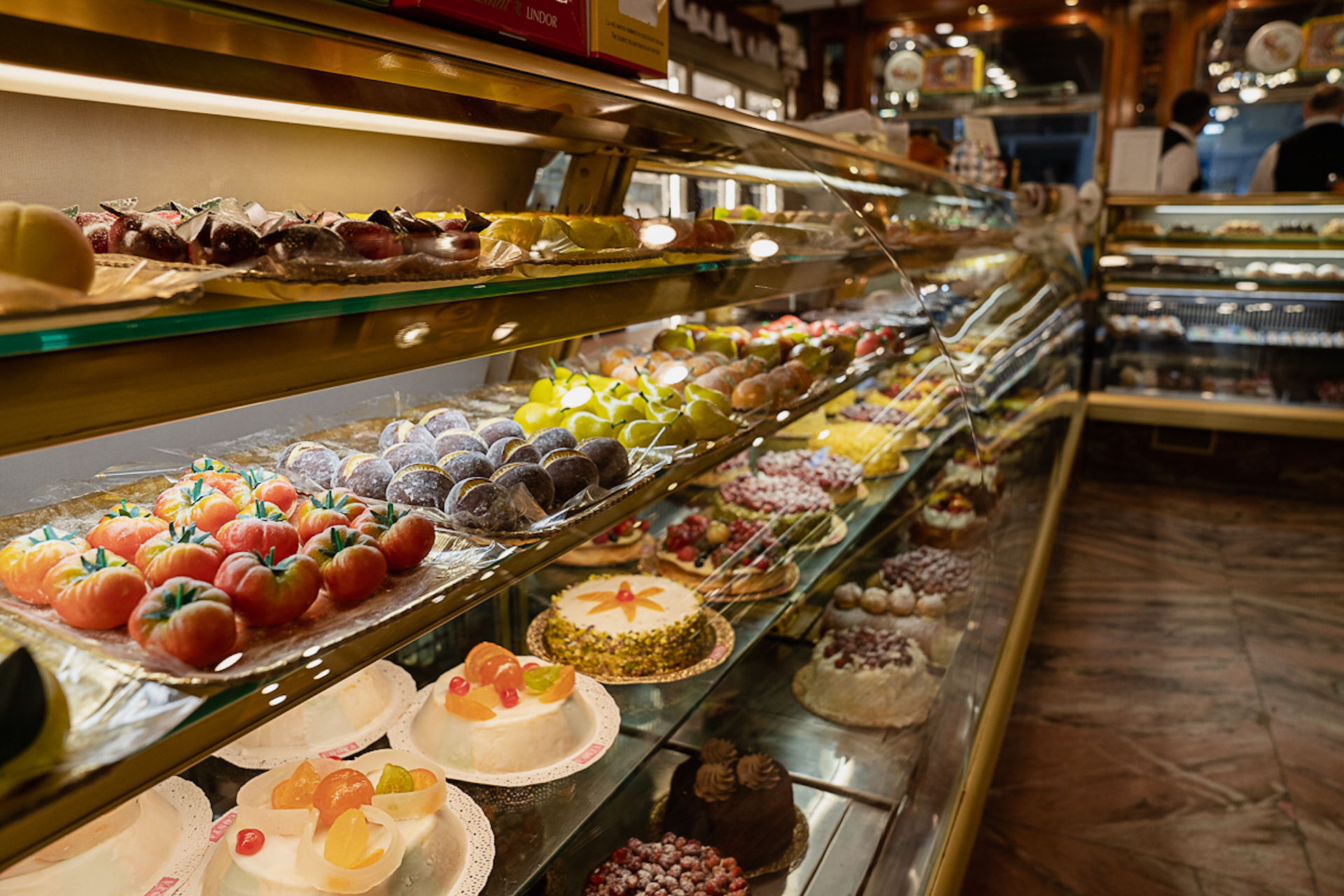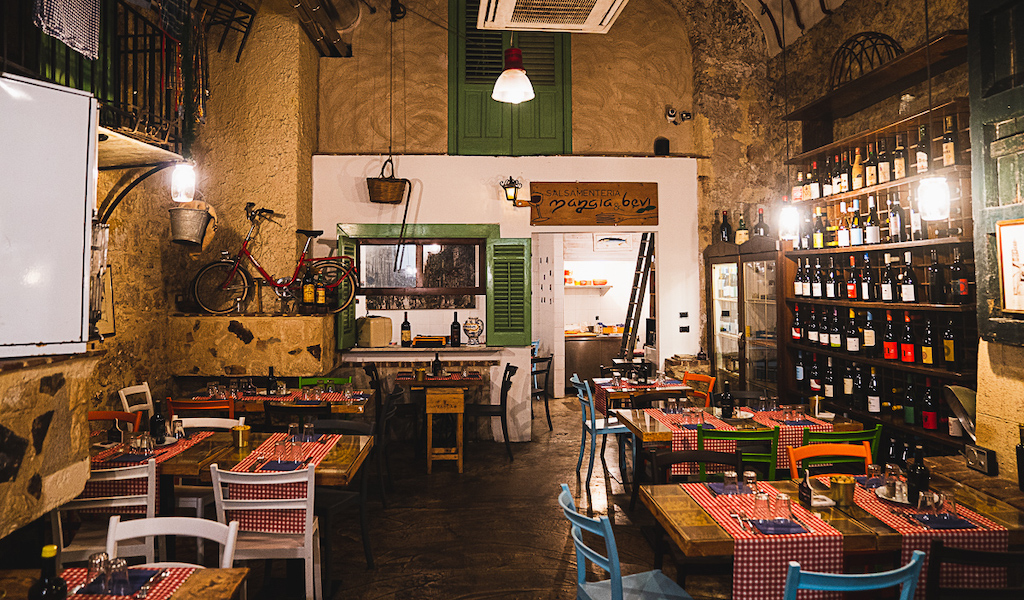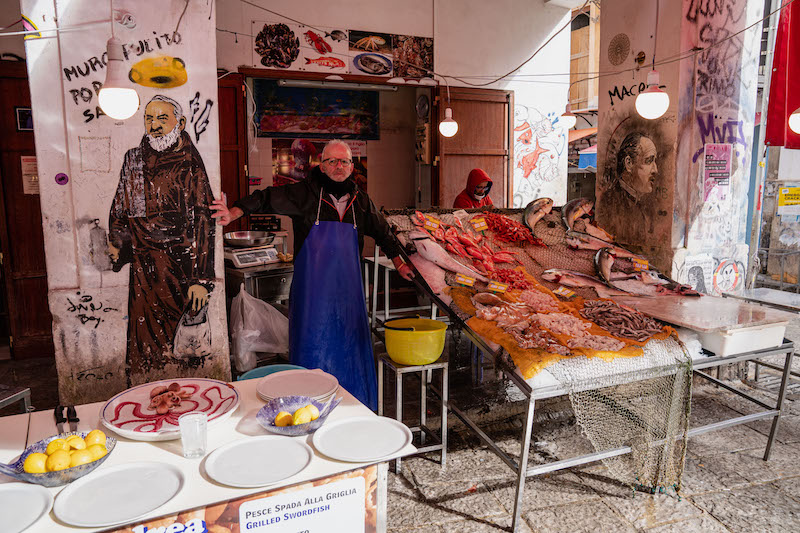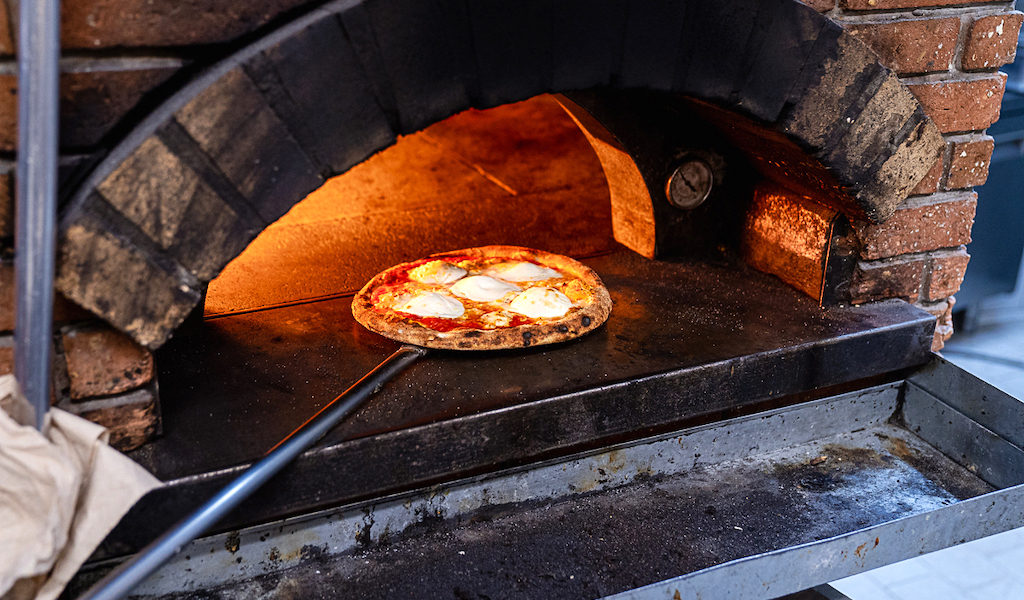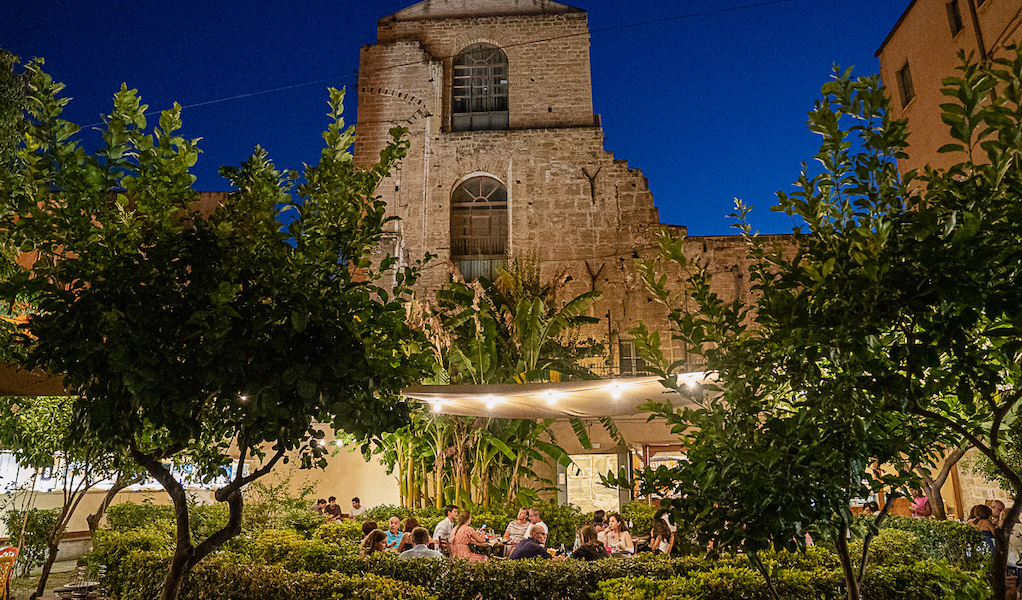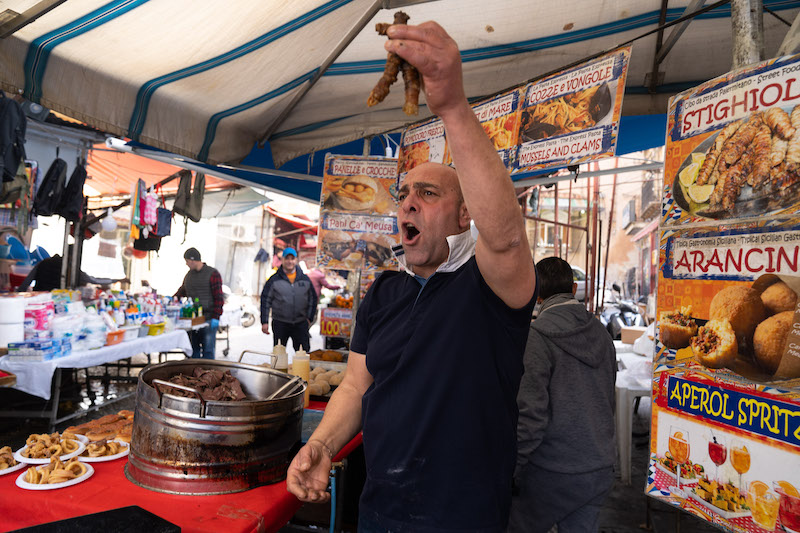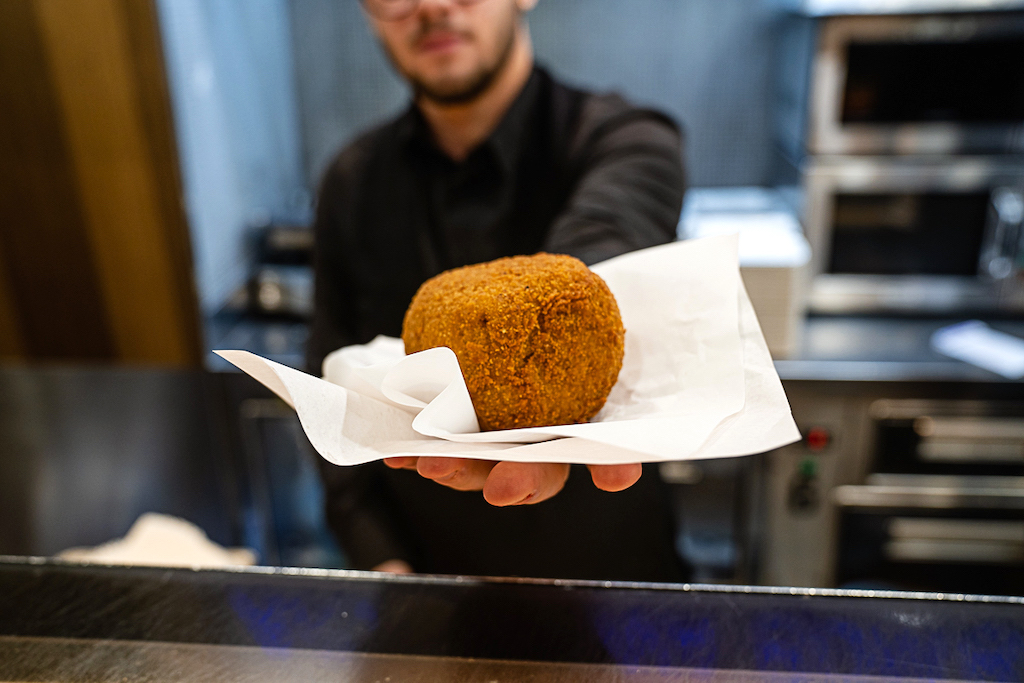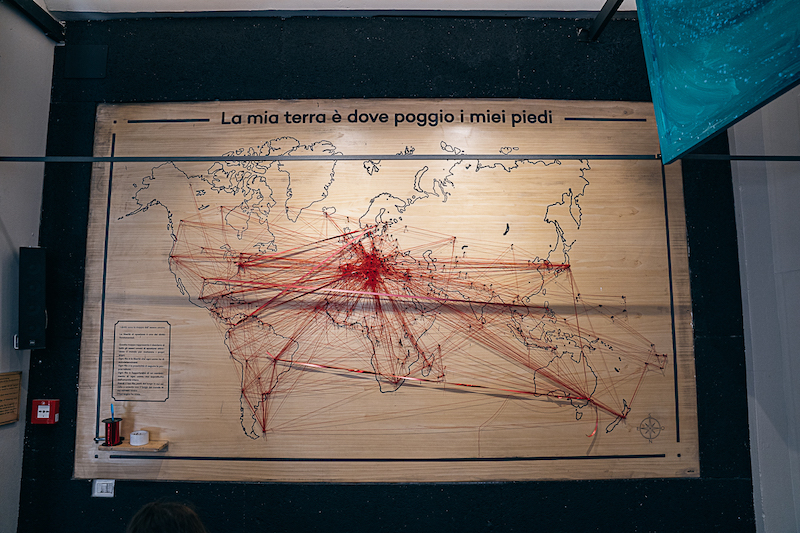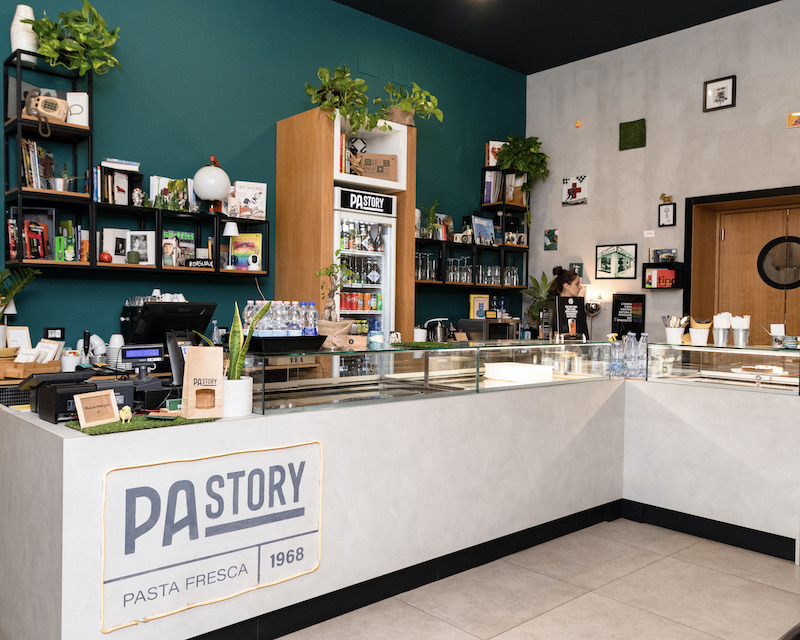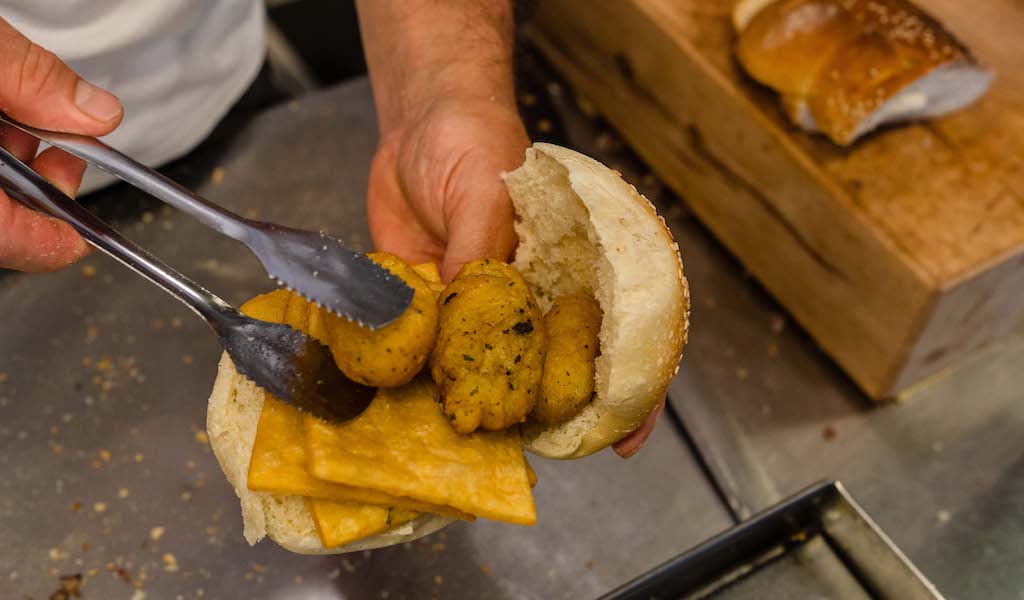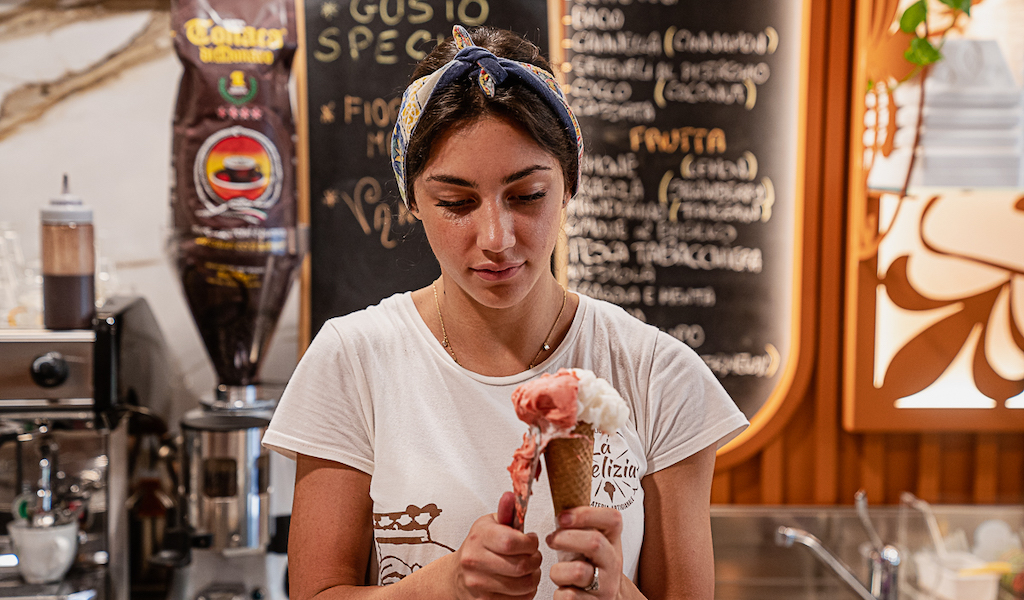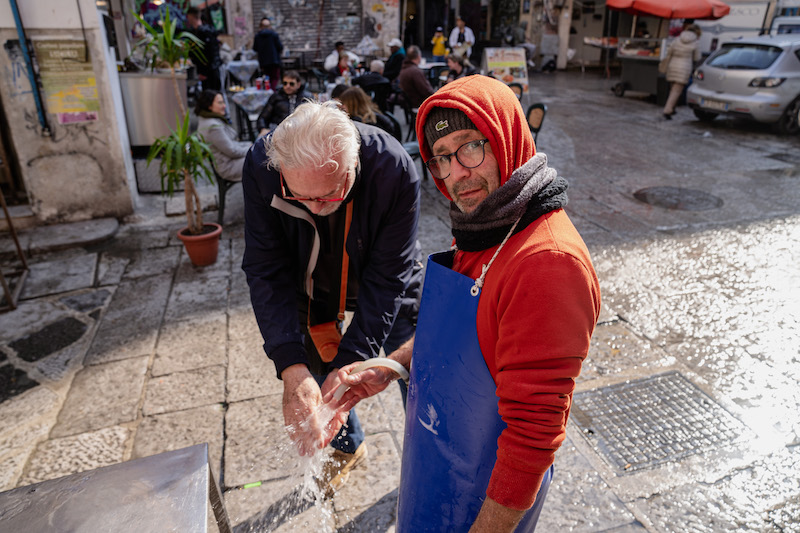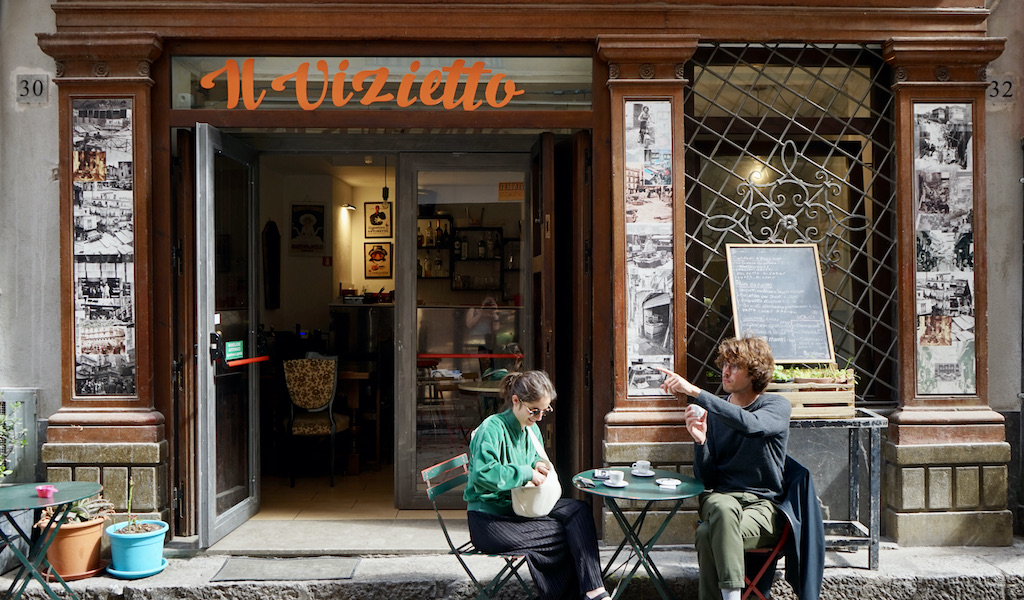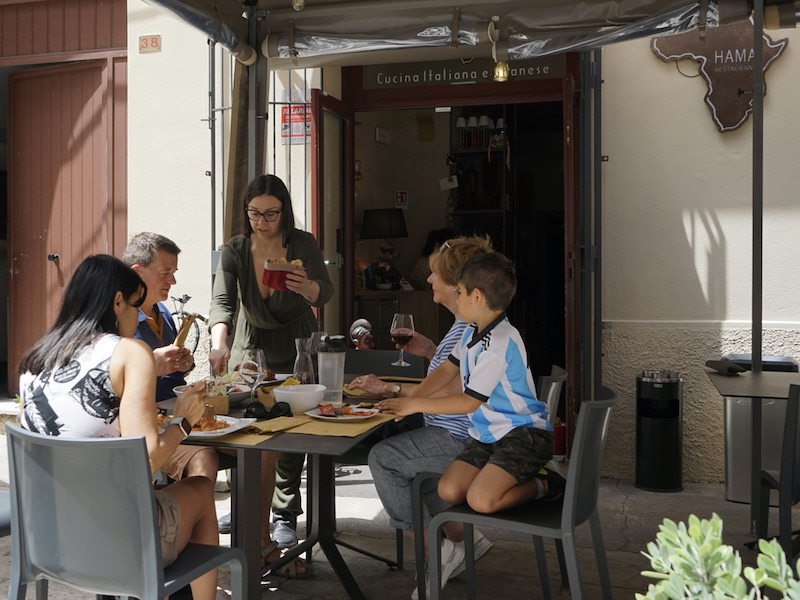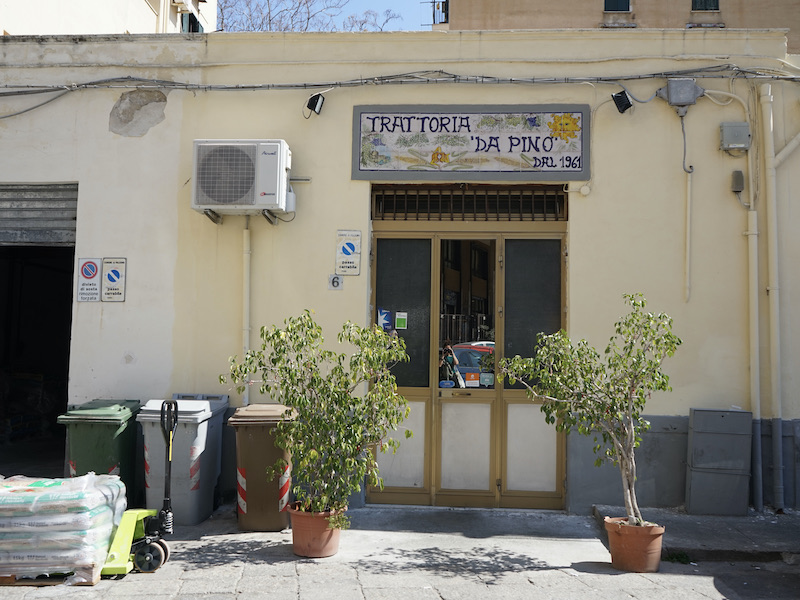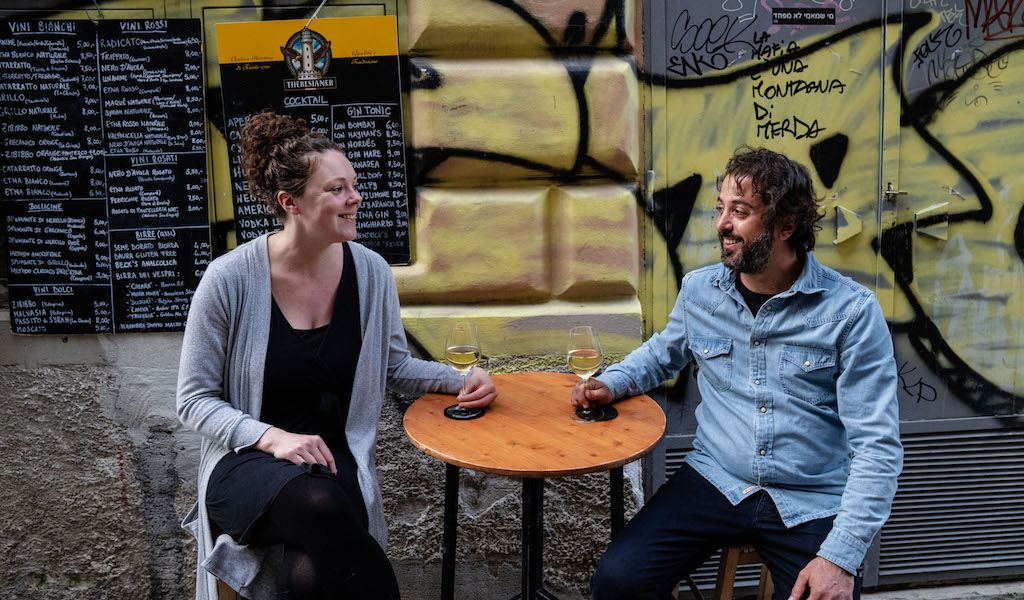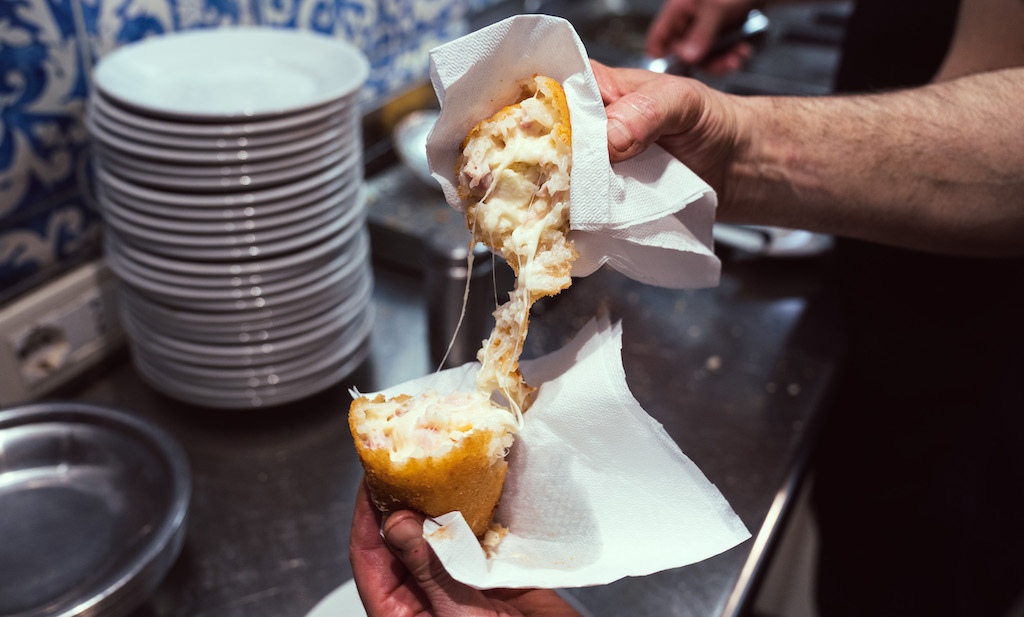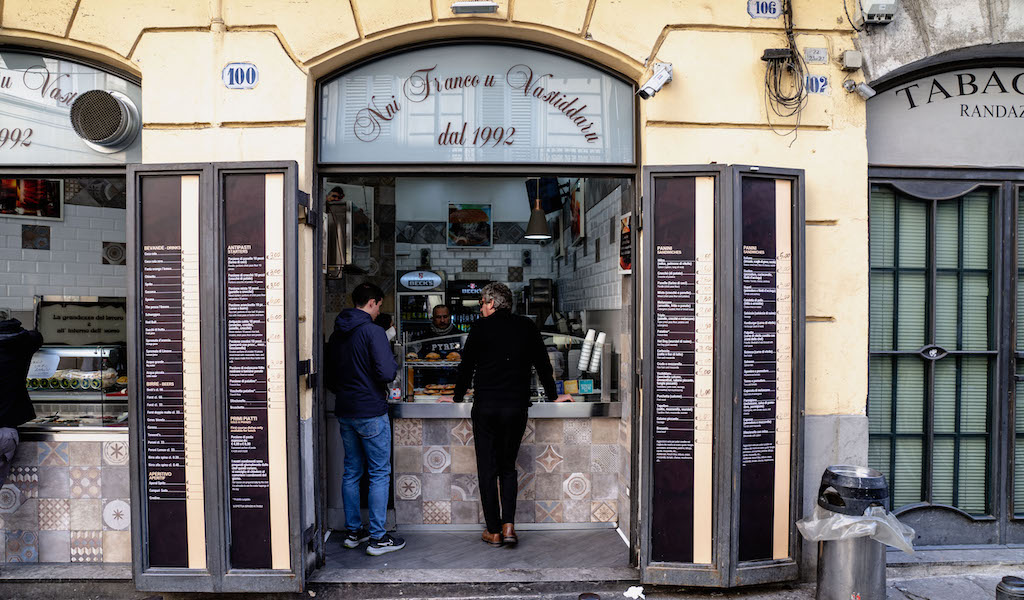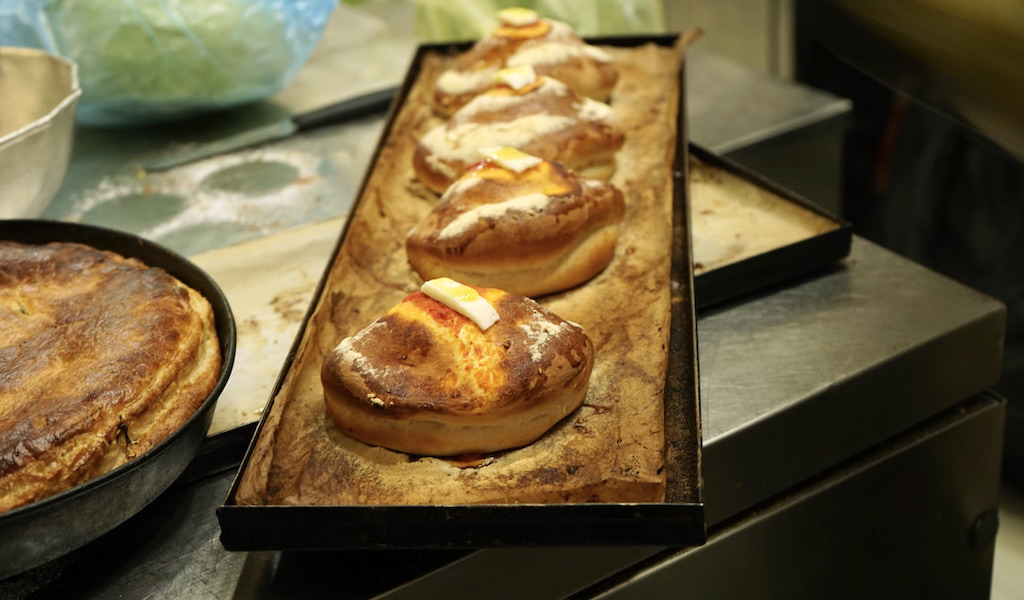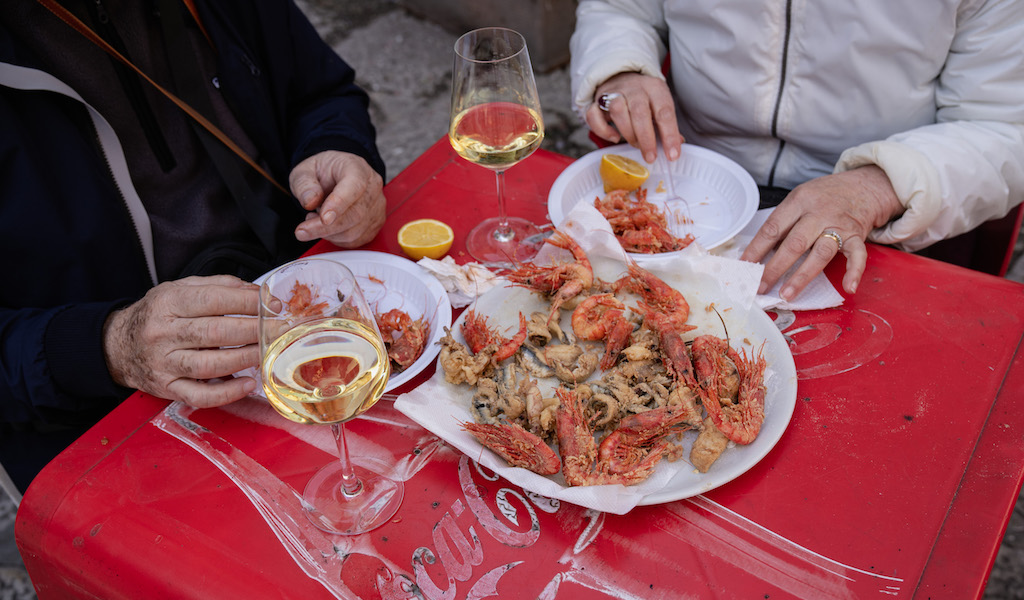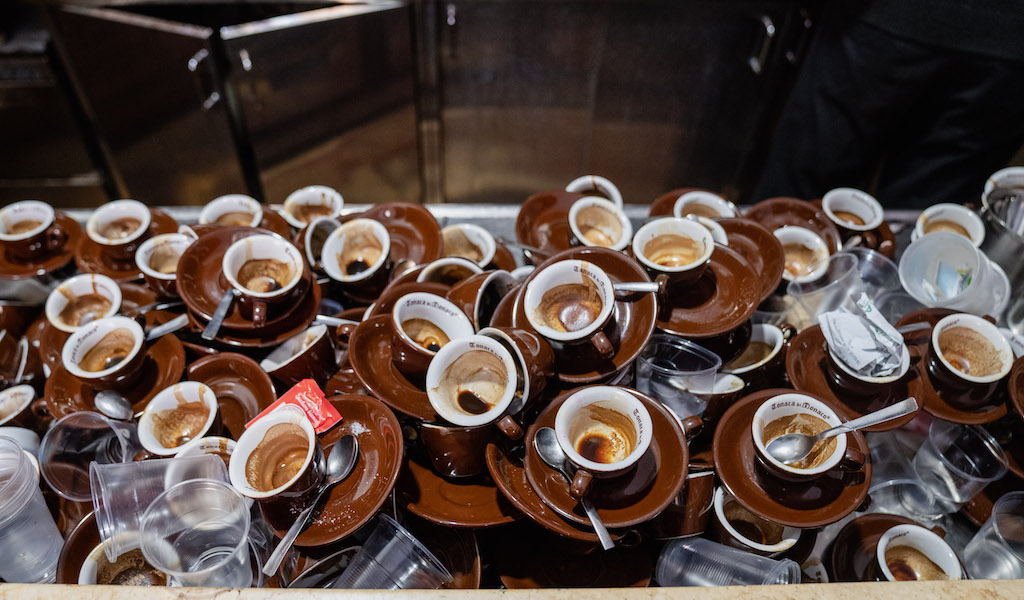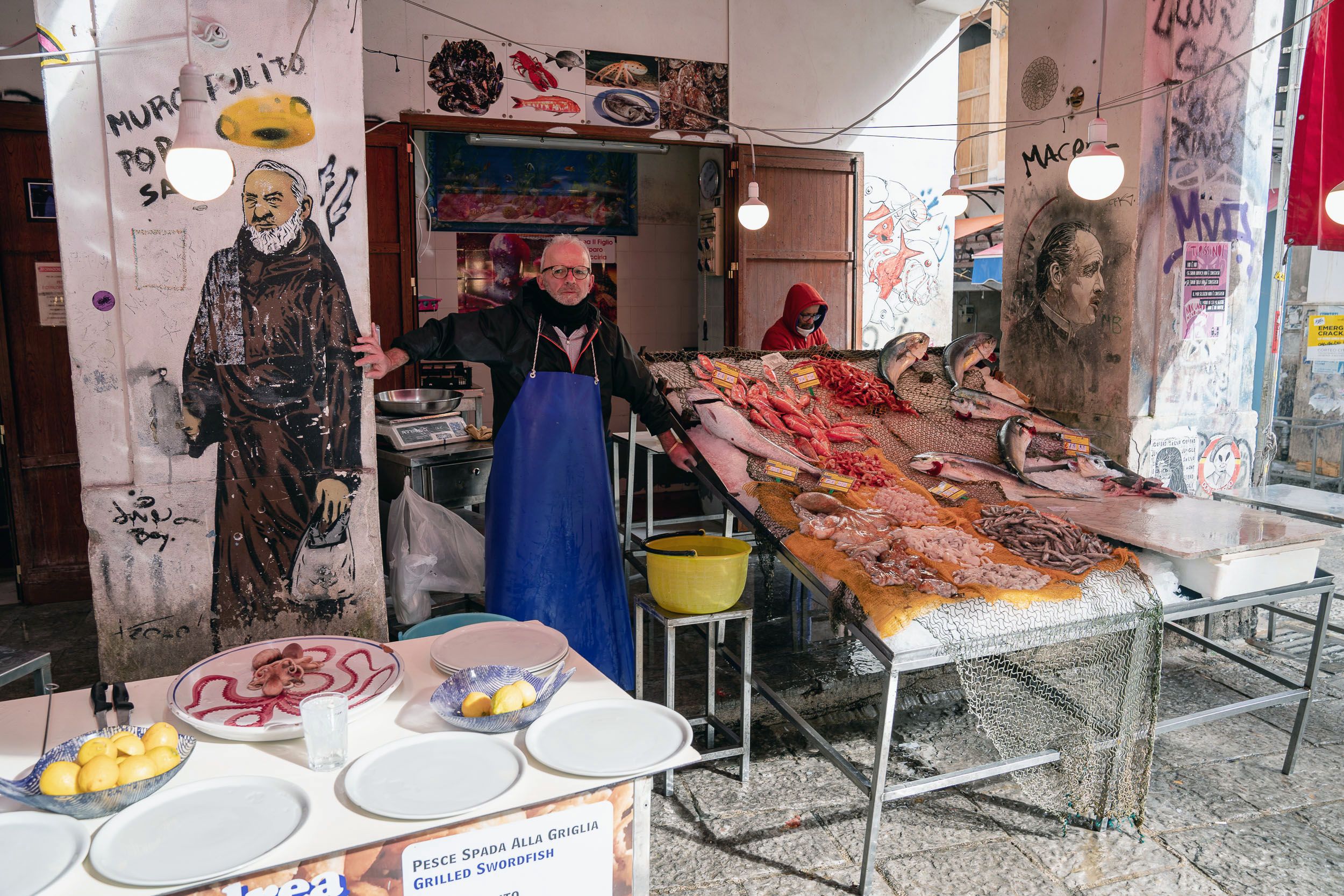We can't find the internet
Attempting to reconnect
Something went wrong!
Hang in there while we get back on track
Palermo
Palermo's culinary record
Sicily has a millennial history that has integrated many different cultures, and Palermo’s culinary scene is the highest expression of this. Here, each dish is not only a simple assemblage of different ingredients, but a living story that wants to be told and savored. Traditional Sicilian cuisine was born from the food of the poor, made from the scraps that the nobles threw away. From this, necessity has been made a virtue; from poverty, the richness of gastronomic creativity has blossomed. This can still be seen today, in the home-style cooking of the old downtown eateries, the sizzling grills of the city’s street food, the sugary assortment of Sicilian pastries.
Get the Full Story →Tour Palermo with Culinary Backstreets®
Upcoming Palermo Food Tours
discover the city, street by street, bite by bite
Explore Palermo
Palermo
Altri Tempi: Trattoria Time Machine
In Palermo, we don’t need a time machine to travel to the past. Stepping into Trattoria Altri Tempi, it’s possible to be transported by the nostalgia of classic flavors from the late 19th and early 20th centuries, a time when Sicilian cuisine still retained its distinct identity, before the influence of other regional Italian cuisines and, later, globalization began to shape the local culinary culture. This small restaurant, in business for 29 years, is a cornerstone of authentic Sicilian tradition, a place where time seems to have stood still. Altri Tempi indeed translates to "other times." The atmosphere is warm and intimate, its walls adorned with old photos, handwritten notes, and paintings depicting still lifes. Copper pots, terracotta vases, and other unused objects complete the decoration, contributing to the feel of an old-fashioned tavern. At the entrance, a giant mortadella awaits to be sliced and tasted.
Read morePalermo
Trattoria Il Delfino: Sicilian Seafood Haven
For over fifty years, the historic restaurant Trattoria Il Delfino has been synonymous with tradition and quality in the heart of Sferracavallo, a small fishing village on the outskirts of Palermo. Here, the scent of the sea blends with the aromas of Sicilian cuisine, fresh fish is the undisputed star, and the philosophy of cooking has remained unchanged over time. At the helm of this renowned trattoria is Nino Billeci, who, together with his family, carries on a legacy that began in the 1970s. The restaurant’s story dates back to a time when fish was considered the food of the poor, and meat was preferred by those who could afford it. But over time habits changed, and Il Delfino became a touchstone for those seeking an authentic seafood experience.
Read morePalermo
Ciccio Passami l’Olio: Palermo’s Neighborhood Pizzeria
“I'm a big pizza eater,” Francesco “Ciccio” Leone confesses. “But what I like most is being together with friends, conviviality.” The broad-shouldered Palermo native, 50, greets everyone who enters his establishment with a welcoming smile. It was during a dinner party held at his home that he came up with the idea for the name of his pizzeria. “The name came about by chance,” he recalls. “My friends would come to my house to eat, they would say, ‘Ciccio, pass me this; Ciccio, pass me that,’ and so I thought of calling the pizzeria Ciccio Passami l’Olio, which means ‘Ciccio, pass me the oil.’”
Read morePalermo
Ballarak: Brewed in Palermo
On warm afternoons, the Piazza Magione lawn fills up with young people, groups of friends with guitars, and people of all ages enjoying the outdoors while sipping excellent craft beer – the first brewed in Palermo. This scene is possible thanks to Ballarak, a craft brewery in the heart of Piazza Magione that has managed to transform itself into a true landmark for beer lovers. Its story began in 2013, during a homebrewers' competition in Messina, where four beer enthusiasts met and formed a bond based on their common passion.
Read morePalermo
Ferro di Cavallo: Meet You at the Horseshoe
Tall flames and hot oil, stacked plates and searing pans, shouting and laughter: the kitchen of this trattoria may look chaotic, but it is a perfectly organized and harmonious chaos that well represents Palermo's vibrancy – the same energy that can be found in one of the old town markets or in city traffic. The same liveliness extends to the dining room, where a jovial and festive atmosphere is established among customers, waiters, and the restaurant’s owners. Waiters sweep in and out each time the cooks ring the bell, bringing traditional Palermo dishes to the tables.
Read morePalermo
Best Bites 2024: Palermo
Palermo is in the midst of a gastronomic evolution mirroring its own colorful heritage. Ancient Greek influences, Arab spices, Norman opulence, and Spanish traditions have long made Sicily’s largest city a chaotic mix of cultures. In recent years, this blend has been elevated by a new wave of chefs and restaurateurs who reinterpret tradition while staying true to the essence of the island. While classic trattorias and osterias that have served generations remain bastions of tradition, a younger generation of innovators is emerging, making 2024 a year of fun eating in Palermo.
Read morePalermo
La Casa del Brodo dal Dottore: Doctor’s Orders
Along Via Vittorio Emanuele, one of the two thoroughfares that, together with Via Maqueda, bisects Palermo's old center to form its four historic districts, a small sign for a trattoria stands out on the corner of a building. La Casa del Brodo dal Dottore has been open here since 1890, making it the oldest eatery in Palermo and one of the longest-lived in southern Italy. La Casa del Brodo Dal Dottore translates literally to “The House of Broth From the Doctor,” because the specialty of the house is precisely meat broth and related boiled meat. For the first hundred years of operation, the establishment served nothing but broth: in the kitchen of the modest two-room eatery, cooks stirred broth in large pots atop cast-iron wood burning stoves. Customers would sit at a small table where they were served broth, boiled meat, tortellini or pasta in broth.
Read morePalermo
Trattoria U Zu Caliddu: Made in the Mountains
We’re surrounded by nothing but fresh air and trees as we head into the mountains overlooking Palermo. After a short and scenic drive up the mountain road, around the bend, we spot our destination – Trattoria U Zu Caliddu, a local institution with over eighty years of history. Located in the mountain hamlet of Piano dell'Occhio in Torretta, on the outskirts of Palermo, the restaurant was named after its founder Calogero Bonello, who everyone knew by the nickname Caliddu Aciedda (“Charlie Bird”).
Read morePalermo
El Bocadillo: Street Food Philosopher
Venture inside the Ballarò market – a lively and historic city market in Palermo’s Albergheria district – and you will find yourself catapulted into a sensory experience: the colors of the fruits and vegetables, the smoke from the grills clouding the alleys, the smell of spices mingling with the smell of survival. And then the voices: they all shout here. Or rather: they “abbannìano.” “Abbanniari” is the ancient custom of Palermo street vendors to sing out their goods to attract customers’ attention. Derived from the times and from a world in which marketing studies and advertising techniques had not yet arrived, in which even noticeable signage was a quantum leap that not all merchants could afford, the abbanniata was the democratic and free tool available to street vendors, because all they needed was their own voice.
Read morePalermo
FUD: American Food, Sicilian Style
It may seem absurd to tell the story of Sicilian gastronomic culture through typical American fast food favorites, but that is just part of the culinary richness of this island. This is the concept at FUD: Bottega Sicula, a restaurant that offers the likes of hamburgers, hot dogs, burritos, and fries, all with a distinctive Sicilian touch. From the local ingredients to the clever marketing, everything at FUD is a game of names and flavors. The idea was born in 2012, the brainchild of 47-year-old restaurateur Andrea Graziano. Andrea, originally from Catania, shares that he has always had a passion for cooking: after graduating, he worked for two years in England as a chef, a fate common to many Sicilians.
Read morePalermo
Bar del Corso: Coffee, Baldo’s Way
The traditional way of preparing coffee in Italy is using a manual lever coffee machine, which allows for precise control over the temperature and pressure of the water, resulting in a rich and flavorful cup of coffee. But there’s more to it than just technique. In some cafés in Sicily, coffee is not simply a craft but a cultural artifact, creating it considered a work of art. Though Palermo has its fair share of coffee, it’s not always easy to find cafés where these traditions are honored with care and diligence. The Bar del Corso is one such hidden gem in the heart of Palermo. Located on the bustling Via Vittorio Emmanuel – the oldest street in Palermo, where every vendor vies for attention – its modest storefront does not catch the eye at first glance.
Read morePalermo
A Casa di Francesco: Palermo's Organic Culinary Delights
Those familiar with Palermo’s cuisine tend to associate it with indulgent street food and a rich culinary heritage that doesn’t cut corners when it comes to taste – no matter the cost for one’s health. But tucked away down a slender side street that branches off of Palermo's bustling Via Ruggero Settimo is A Casa di Francesco, a restaurant that meets the already high expectations around Palermo’s cuisine with a selection of innovative health-conscious dishes. The restaurant started out in 2015 as a boutique supermarket offering health-conscious Sicilian products and vegetarian dishes to be eaten there or to take away – an idea that was far ahead of its time in Palermo. While vegetarian options were common at home, with simple vegetable-based recipes at the center of traditional cuisine—such as pasta alla Norma (a pasta dish served with fresh tomato sauce, fried eggplant, and salted ricotta) or caponata, (the Sicilian sweet-and-sour dish made of eggplants, tomatoes, olives, capers, and various aromatic herbs) well-balanced dishes for a healthy diet were hard to find in the city’s restaurants.
Read morePalermo
Piccolo Napoli: Straightforward Sicilian
In Italy, family is everything. And in Palermo, every family has a fisherman. These concepts are present on Trattoria Piccolo Napoli’s red, blue and white sign, which sports a caricature of a perplexed sea bass and a promise of home cooking. Open the wooden doors to find a three-generation seafood restaurant a stone’s throw from the city’s old harbor with a fantastic fresh fish display, with part of a swordfish sitting high on the icy altar, below a bowl of lemons.
Read morePalermo
Nni Franco U Vastiddaru: The God of Spleen
Walk around Piazza Marina and you will come across several city monuments and historical sites. You’ll be enchanted by Palazzo Steri, which today houses the university rectory but until a few centuries ago was home to the infamous Inquisition Tribunal. You will also find the place where the famous New York policeman of Italian origin, Joe Petrosino, who came to Palermo to investigate the Sicilian mafia, was murdered in the early 20th century. At the center of the square, in Villa Garibaldi, designed by the famous architect Basile and dedicated to the leader of the Unification of Italy, stands the largest Ficus tree in Europe: a true natural monument that unloads the weight of its prominence on branches that end up expanding its roots by breaking their way through centuries-old sidewalks.
Read morePalermo
Pasticceria Costa: The Sweet Freedom of Choice
The bright refrigerator display case illuminates a long line of pastries filled with cream pastry and topped with fruit, cannoli filled with ricotta, chocolate and fruit cakes, cassatas and almond cookies. "Sicilian pastries are unique in the world," says Riccardo Costa proudly. Alongside his father and sons, Riccardo runs the historic Pasticceria Costa, a true Palermo institution that opened its doors in 1960, a classic bar and pastry shop where you will find Sicilian confectionery excellence. "It all began with my father, Antonino," says Riccardo. Flash back to the post-war years; 1946, to be precise. Antonino Costa was only eight years old and to escape a destiny of hunger and poverty in a city still destroyed by bombs, he began to work as an apprentice, first in a bakery and then in a pastry shop. At the age of eighteen, Antonino Costa opened his own confectionery workshop to supply the various bars in the area, but it was in 1960 that he opened the historic pastry shop that bears his name, on Gabriele D'Annunzio Street.
Read morePalermo
Bar del Corso: Coffee, Baldo’s Way
The traditional way of preparing coffee in Italy is using a manual lever coffee machine, which allows for precise control over the temperature and pressure of the water, resulting in a rich and flavorful cup of coffee. But there’s more to it than just technique. In some cafés in Sicily, coffee is not simply a craft but a cultural artifact, creating it considered a work of art. Though Palermo has its fair share of coffee, it’s not always easy to find cafés where these traditions are honored with care and diligence. The Bar del Corso is one such hidden gem in the heart of Palermo. Located on the bustling Via Vittorio Emmanuel – the oldest street in Palermo, where every vendor vies for attention – its modest storefront does not catch the eye at first glance.
Read morePalermo
Osteria Mangia e Bevi: To Nonna’s Kitchen We Go
Imagine you are Marcel Proust at the beginning of his novel In Search of Lost Time, or the feared food critic Anton Ego in Ratatouille, the Pixar masterpiece that won the 2008 Oscars for Best Animated Film. In the exact moment you taste a madeleine dipped in tea or a forkful of ratatouille, your palate is activated you are catapulted back in time, to that first Sunday morning you tried the dessert or to that time when, after falling off your bike, the dinner your mother prepared you somehow seemed to make everything better. It is this emotion, this involuntary memory flashback, that cousins Nico Virga and Angelo Fascetta had in mind when they opened their restaurant. Located on Via Cavalieri di Malta, behind the Church of San Domenico – known as the Pantheon of Sicilians – Osteria Mangia e Bevi is a charming eatery that offers not only simple home cooking from Palermo, but also a true taste of grandma's cooking. Grandma Antonietta’s, more specifically.
Read morePalermo
Da Andrea: Guardian of a Slippery Tradition
Descend the steps of Discesa del Caracciolo, leaving Via Roma behind, and you will find yourself in the heart of Palermo’s old Vucciria market, a micro-universe unto itself in which nostalgia hovers in the air and in the eyes of the locals. Typical Sicilian fatalism translates into the saying: “When the balàte of the Vucciria dry out.” The balàte are the typical stones that make up the floor on which the market stands: legend has it that – precisely because of the presence of merchants of all kinds who wash their workbenches at the end of each day – the floor of the Vucciria never fully dries.
Read morePalermo
Ciccio Passami l’Olio: Palermo’s Neighborhood Pizzeria
“I'm a big pizza eater,” Francesco “Ciccio” Leone confesses. “But what I like most is being together with friends, conviviality.” The broad-shouldered Palermo native, 50, greets everyone who enters his establishment with a welcoming smile. It was during a dinner party held at his home that he came up with the idea for the name of his pizzeria. “The name came about by chance,” he recalls. “My friends would come to my house to eat, they would say, ‘Ciccio, pass me this; Ciccio, pass me that,’ and so I thought of calling the pizzeria Ciccio Passami l’Olio, which means ‘Ciccio, pass me the oil.’”
Read morePalermo
Al Fresco: A Fresh Start
Upon entering Al Fresco in the Ballarò neighborhood, we are struck by both the kind welcome and the special location – the restaurant is set in a garden enclosed within the walls of Casa San Francesco, a former seventeenth-century convent, lit by strings of lights dangling between plants and saplings. There is an immediate sense of openness, freedom and freshness. This is no coincidence: while “al fresco” in Italian can refer to the chill of being out in the open air, it is also an expression used to mean “life in prison.” The double meaning makes sense in this case – despite its first impression as a regular eatery, perhaps the most special feature of Al Fresco is that working in the kitchen and in the dining room are former inmates who have joined the team following their release from prison.
Read morePalermo
Best Bites 2023: Palermo
After this 2023’s surge of tourists across Sicily (fueled, in many ways, by the international success of locally shot series like White Lotus and upcoming Gattopardo), the New Year promises to be a busy one, as more curious travelers are drawn by the stunning landscapes, impressive architecture, and, of course, the delectable cuisine. While some of Palermo’s streets have transformed into tourist hubs with souvenir shops and eateries, it can be tricky to pick out the most authentic spots. However, within the vast expanse of the city, a little exploration and attention can lead to high-quality, tranquil places that truly honor Sicilian food and ingredients, even on the busiest streets.
Read morePalermo
Santa Lucia Day: Celebrating All Things Arancina in Palermo
It’s hard to choose among all of Sicily’s justifiably famous foods, but if we had to pick one as the most the most iconic and beloved it would have to be arancine. These small rice balls, filled with enticing ingredients, coated in a crispy breading and deep fried, are a true culinary masterpiece that embodies the passion and creativity of Sicilian cuisine. Traditionally, arancine were prepared in two flavors: meat and “butter.” Meat arancine are stuffed with meat sauce and peas. Butter arancine, despite the name, are actually filled with mozzarella cheese, cooked ham and béchamel sauce. Over the years, however, local rosticceria – fry shops selling the treat – have added different variations: today, you can find spots offering arancine stuffed with everything from sausage to swordfish, spinach, “alla norma” (with fried eggplant and tomato sauce) and even Nutella – a far cry from the historic roots of this famous dish.
Read morePalermo
Moltivolti: Kitchen Without Borders
At Moltivolti, a restaurant and coworking space located in the Ballarò district of Palermo, a large wooden panel on which a map of the earth is drawn hangs on the wall. Lines of red thread spread out from each continent, connected to other countries, other cities, other coasts. The threads, hundreds of them, form a tangle, representing human migrations from one part of the planet to another, and the dreams of people who have crossed seas and borders. Above this map read the words: "My land is where my feet stand." This is the Moltivolti motto. The idea was born in 2014 on a beach in Senegal when a group of friends thought of opening a place in Palermo that was both a restaurant and a coworking space – a place that could welcome anyone from anywhere in the world.
Read morePalermo
Pastory: Strength in Noodles
Pastory is located on Via Sammartino, in an affluent area of Palermo; however, this fresh pasta shop has its roots in revolution. It all began in 1968, a year marked by emancipatory struggles in France and beyond, which were reshaping societal norms and providing women with new avenues for participation and empowerment. Inspired by this transformative era, Serena Sabatino's grandmother, Angelina di Carluccio, made the decision to migrate from Naples to Palermo. Accompanied by her husband, Raffaele Sabatino, who had secured employment in Sicily, Angelina brought with her a wealth of knowledge about the Neapolitan art of pasta fresca all'uovo (fresh egg pasta).
Read morePalermo
First Stop: Katie Parla’s Palermo
Editor’s note: In the latest installment of our recurring First Stop feature, we asked food writer Katie Parla about her favorite bites and food memories in Palermo. Katie is a Rome-based food and beverage writer, culinary guide, and bestselling cookbook author whose family emigrated to the United States from Palermo. Katie’s work explores the food, culture, and history that shape Italy and its cuisine. Her new book, Food of the Italian Islands, is a deep dive into the food of Sicily, Sardinia, and beyond.
Read morePalermo
La Delizia: Geniuses of Gelato
When we meet Mr. Giovanni Scalici, owner of the gelato shop La Delizia, he explains the formula for his success in one word: "Simplicity." We are in Sferracavallo, a seaside suburb of Palermo located between the mountains and a beautiful gulf. Here the coast is filled with dozens of seafood restaurants, but if you venture slightly off the promenade you will find this gem of a gelateria on Via Dammuso.
Read morePalermo
Palermo: The State of the Stomach
As the sun dawns over the city of Palermo, warming the narrow streets still dampened by the night, merchants in the old quarter set up stands with their products: plentiful fruits, vegetables, meat and fish await the Palermitans who prefer to do their shopping here rather than in supermarkets illuminated by cold neon lights. At the Vucciria, one of the city's historic markets, Andrea Vattiato is setting up the fish counter where he has worked for half a century. He displays on ice a selection of the best fish the Mediterranean Sea has to offer, and with the help of a hose he wets the fish.
Read morePalermo
Il Vizietto Bistrot: In Praise of Bad Habits
In the historic center of the city, nestled near the vibrant Vucciria market, lies a unique dining experience in Il Vizietto Bistrot. A former abattoir, the space has been transformed into a restaurant that beckons patrons in search of a delicious meal. After all, the name Il Vizietto means “bad habit,” embodying the restaurant's philosophy – a place to indulge, to enjoy, anchored by a carefully curated menu filled with Sicilian staples. Sisters Maria, Karima and Rosaria Ferrante opened Il Vizietto Bistrot in 2020, and the project has survived several challenges, a global pandemic among them. Maria, Karima, and Rosaria Ferrante even considered naming it Bordello – “che bordello” is a common way of referring to a real mess in the local vernacular – an ode to the chaotic process of opening their bistro.
Read morePalermo
Hama: Sicily meets Ghana
Ghana and Sicily may not seem like a natural fit, but they come together perfectly at Hama, a Palermo restaurant that brings the two places’ cuisines together while also offering an edible lesson about Sicily’s centuries-old role as a meeting point between Europe and Africa. The name Palermo derives from the ancient Greek panormos and refers to any place where a boat can be docked easily. As a gateway to Europe, Sicily has been a cultural melting pot for many centuries. Today, this long history of cultural and social interactions is woven into the fabric of the city: as street names, as linguistic particularities, and culinary specialties. Migration from Asian and African countries is particularly evident in Sicilian life, especially here in Palermo.
Read morePalermo
Trattoria da Pino: Old School in the Old District
The Borgo Vecchio neighborhood in Palermo is sandwiched between the affluent Politeama-Via Libertà district and the historic fishing community of Castellammare, also known as la Loggia. On one side you have the Via Libertà, an arterial road peppered with theaters and gardens that the legendary composer Richard Wagner once described as the Champs-Élysées of Sicily. On the other, you have the scent of the foamy sea. In 1556, the neighborhood stretched from the San Giorgio gate to the Santa Lucia church. As a result, it adopted the name of this physical boundary and became known as Borgo di Santa Lucia. Lured by the promise of development of a nearby port, the street quickly attracted artisans and merchants from other regions and the district grew in stature.
Read morePalermo
El Bocadillo: Street Food Philosopher
Venture inside the Ballarò market – a lively and historic city market in Palermo’s Albergheria district – and you will find yourself catapulted into a sensory experience: the colors of the fruits and vegetables, the smoke from the grills clouding the alleys, the smell of spices mingling with the smell of survival. And then the voices: they all shout here. Or rather: they “abbannìano.” “Abbanniari” is the ancient custom of Palermo street vendors to sing out their goods to attract customers’ attention. Derived from the times and from a world in which marketing studies and advertising techniques had not yet arrived, in which even noticeable signage was a quantum leap that not all merchants could afford, the abbanniata was the democratic and free tool available to street vendors, because all they needed was their own voice.
Read morePalermo
Bottega Monteleone: Perfect Pairing
Let’s face it, it’s hard to find a calm spot in Palermo’s city center. Some evenings, one simply wants to exchange the honking of cars for the uncorking of wine bottles, hidden away from the splendid excess the city has to offer. Such an escape exists at Bottega Monteleone, located on a small, quaint pedestrian walkway, which bears the same name as the wine bar. In this tiny bottega, you’ll be treated to an abundance of wines and Sicilian specialties, as well as the hospitality of the bar’s owners, Katharina and Angelo. The Bottega pays homage to the different geographical origins of the owners. Its appearance is unmistakably Palermitan but its history is reminiscent of an old factory (in this case actually a garage) turned into a chic bar – typical of the former East Germany, where Katharina grew up and studied.
Read morePalermo
Antica Focacceria del Massimo: Volcanic Arancini
Sicily’s rich, volcanic soil has borne many fruits: grapes, figs, peaches and citrus, to name just a few. It has also cultivated fiery debates and regional rivalries about details of traditional recipes; culinary wars whose significance is usually lost on most non-Italians. One such debate concerns the proper way of pronouncing one of Sicily’s most beloved snacks: the arancini (plural) – stuffed rice balls, battered and deep-fried. Whereas the west of the island refers to it as arancina, the east calls it arancino. Cue Spaghetti Western music. Over the centuries, Palermo has experienced and absorbed various cultures and their cuisines. The influence of Arabs and North Africans play an especially prominent role, dating back to the period of 827-1091 A.D.
Read morePalermo
Nni Franco U Vastiddaru: The God of Spleen
Walk around Piazza Marina and you will come across several city monuments and historical sites. You’ll be enchanted by Palazzo Steri, which today houses the university rectory but until a few centuries ago was home to the infamous Inquisition Tribunal. You will also find the place where the famous New York policeman of Italian origin, Joe Petrosino, who came to Palermo to investigate the Sicilian mafia, was murdered in the early 20th century. At the center of the square, in Villa Garibaldi, designed by the famous architect Basile and dedicated to the leader of the Unification of Italy, stands the largest Ficus tree in Europe: a true natural monument that unloads the weight of its prominence on branches that end up expanding its roots by breaking their way through centuries-old sidewalks.
Read morePalermo
Caffè del Kassaro: Market to Table
The myriad walks around the streets of Palermo can stir up a variety of feelings – curiosity, awe, wonder. Strolling around the centro storico, the historic city center, one can’t help but feel that the city is drenched in history. The area is dotted with miracles; Phoenician and Roman vestiges, buildings dating from the Gothic, Renaissance, Baroque and Arab-Norman-Byzantine eras. Palermo’s oldest street, Corso Vittorio Emanuele II, was once called Via del Cassaro. The name Cassaro, which means castle, derives from the Arabic noun Al-qasr, becoming U Cassaru in the Palermitan dialect. The castle was the original city center and this street, connecting it to the seashore, was one of Palermo’s main arteries.
Read morePalermo
Da Andrea: Guardian of a Slippery Tradition
Descend the steps of Discesa del Caracciolo, leaving Via Roma behind, and you will find yourself in the heart of Palermo’s old Vucciria market, a micro-universe unto itself in which nostalgia hovers in the air and in the eyes of the locals. Typical Sicilian fatalism translates into the saying: “When the balàte of the Vucciria dry out.” The balàte are the typical stones that make up the floor on which the market stands: legend has it that – precisely because of the presence of merchants of all kinds who wash their workbenches at the end of each day – the floor of the Vucciria never fully dries.
Read morePalermo
Bar del Corso: Coffee, Baldo’s Way
The traditional way of preparing coffee in Italy is using a manual lever coffee machine, which allows for precise control over the temperature and pressure of the water, resulting in a rich and flavorful cup of coffee. But there’s more to it than just technique. In some cafés in Sicily, coffee is not simply a craft but a cultural artifact, creating it considered a work of art. Though Palermo has its fair share of coffee, it’s not always easy to find cafés where these traditions are honored with care and diligence. The Bar del Corso is one such hidden gem in the heart of Palermo. Located on the bustling Via Vittorio Emmanuel – the oldest street in Palermo, where every vendor vies for attention – its modest storefront does not catch the eye at first glance.
Read morePalermo
Introducing Palermo: Through the Eyes of Our Local Team
To properly introduce Palermo, CB’s newest location, we turned to our local experts: correspondent and photographer Francesco Cipriano and walk leader Maria Luisa. In celebration of the launch, we spoke with them about Palermo’s gastronomic scene, the special Sicilian relationship with food, and their favorite places in the city. Francesco is a writer and photographer born in New York to a family of Sicilian immigrants who then moved to Switzerland before finally returning to Sicily – the place, he says, that feels the most like home. Maria Luisa is a native Sicilian and a professional culinary guide. She got her culinary start from her grandmother, who taught her how to knead dough to make bread, how to forage for wild plants and how to appreciate a good glass of wine.
Read moreDaily Dispatches from the Frontlines of Palermo
Latest Stories: Palermo
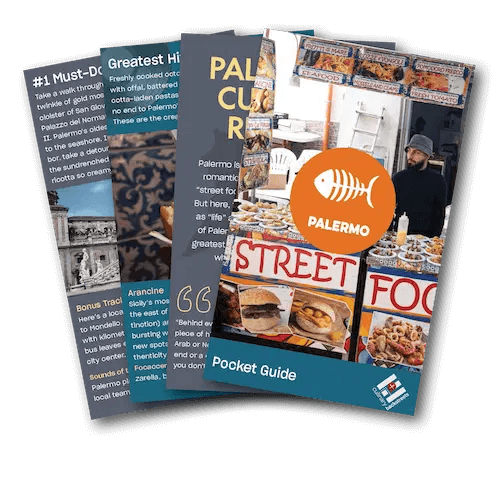
Get Your Free Palermo Pocket Guide
Introducing our pocket-sized Palermo guide — perfect for your next culinary adventure. Yours free when you sign up for our newsletter.
Get Your Free Palermo Pocket Guide
Introducing our pocket-sized Palermo guide — perfect for your next culinary adventure. Yours free when you sign up for our newsletter.
Visual Dispatches from the Frontlines of Local Eating
Palermo Videos

Discover the Culinary Backstreets of Palermo
Culinary Backstreets® Envoys, Always Searching for the Next Hidden Gem
Meet Our Palermo Team

Enrica
Palermo Tour Leader

Maria Luisa
Palermo Tour Leader

Francesca
Palermo Tour Leader

Paola
Palermo Tour Leader

Alessandra
Palermo Tour Leader

Ségolène
Palermo Correspondent

Francesco
Palermo Correspondent and Photographer

Larisa
Palermo Tour Leader
Your Questions, Answered
Palermo’s vaccination rate is at about 70%. Masks are no longer required, and no specific mandates are in place. As of June 1, 2022, the Green Pass or other equivalent certification is no longer required for entry/return to Italy from abroad.
In Palermo, restaurants are one of the best attractions. From the historic center to the suburbs, all restaurants compete with each other in terms of food quality and deliciousness. While the list is long, right now we love Buatta for typical Sicilian cuisine and Osteria Mercede for the best seafood.
Palermo is the capital of Sicily, the largest island in the Mediterranean, separated from the Italian peninsula by the Strait of Messina. On the northwest of the island, its wide gulf faces the Tyrrhenian Sea. It is Sicily’s most-populated city, with around one million people. The name Palermo comes from Greek and means “all port.” This port city has had a host of different conquerors who have contributed to its many-layered heritage overtime – making Palermo a rich cultural capital in a country already steeped in history.
Direct flights between the United States and Palermo Airport (PMO) are infrequent. Usually, a stopover at major Italian airports such as Rome Fiumicino or Milan Malpensa – or main European airports – is required before connecting to Palermo. It may be possible to find direct flights from JFK to Palermo.
Three-quarters of Palermo is surrounded by mountains, and its gulf opens to the Tyrrhenian Sea. You can enjoy a beautiful seaside promenade within walking distance of the historic center. The nearest beach is about 15 minutes from the city: Mondello, one of the most famous in Sicily, with kilometers of fine white sand. The beach can be reached by car, cab or bus (No. 806) that leaves the center every half hour.
Palermo is relatively cheap compared to many major cities worldwide, especially in Europe or the US. You can have an Italian breakfast for one person from 3 to 5 euros (cappuccino and pastry). Restaurants can be cheap or expensive according to the area but, usually, it is possible to buy a main course meal for 15-20 euros (drink and service included). Street food is very cheap at the market and it is possible to buy a traditional bite for just 2 euros. The average price for a coffee is 1-1.50, and a draft beer is about 4 euros.
Although it is the capital of Sicily, Palermo is relatively small compared to other Italian cities such as Rome and Milan. The city center remains the best place to stay in Palermo while on vacation. From the old town to the more bourgeois districts, there are excellent hotels and B&Bs from which you can walk to all the main sites. We most recommend the area around the Politeama Theater and Massimo Theater.
The best time to discover Palermo is spring and fall because of the mild temperatures, even if it is possible to visit Palermo year-round. Some places will be closed in January and February as it is considered low season, but the main monuments are always open to the public.
Compared to other cities, Palermo is very safe. The Palermitani are friendly and welcoming people. Violent crime in the city is rare, but petty crimes such as pickpocketing can be a nuisance in the market areas. People walk around late at night just as they do during the day, though it’s better to avoid isolated streets or alleys.
The climate in Palermo is Mediterranean, with very mild winters and warm, sunny summers. The Sirocco, a wind from Africa, is capable of raising the temperature by several degrees, sometimes pushing the thermometer past 65 F in winter and 100 F in summer.
There is no need for Americans to obtain a visa to enter Italy for trips of less than three months.
Palermo is soaked in history, art, architecture, culture and good food. The attractions are many, and can please people of all ages, starting fro the UNESCO monuments of the Arab-Norman Itinerary. A stroll in the old town will be unforgettable. Take in the exquisite marble statues of the Fountain of Shame and walk along the seafront at the Cala, the former harbor of Palermo, sipping your Sicilian wine for an aperitivo and admiring the view of Mount Pellegrino, one of the most iconic places in Palermo. Adventurous ones can get lost in the narrow alleys surrounding the historic markets of Palermo, which are for sure not to be missed.
Palermo is world famous for street food. Everywhere on the streets and in the markets you can buy arancine or panelle and crocché, spending no more than 2 euros. There is no shortage of beautiful restaurants where you can discover other traditional dishes that make Palermo’s cuisine unique. Whether in the more traditional family-run restaurants, to the more-chic restaurants with a sea view, it will be possible to enjoy an eggplant Caponata or a pasta dish with sardines. Not to be forgotten are the cannolo or cassata, which will add an addictively sweet touch to your holidays.
Sicilians love children, and Palermo is a diverting city with much to do and eat for children of any age. The city’s cobblestone streets and crowds can make walking with a stroller difficult, but there are many parks and gardens, as well as children’s activities in the city’s major museums.


